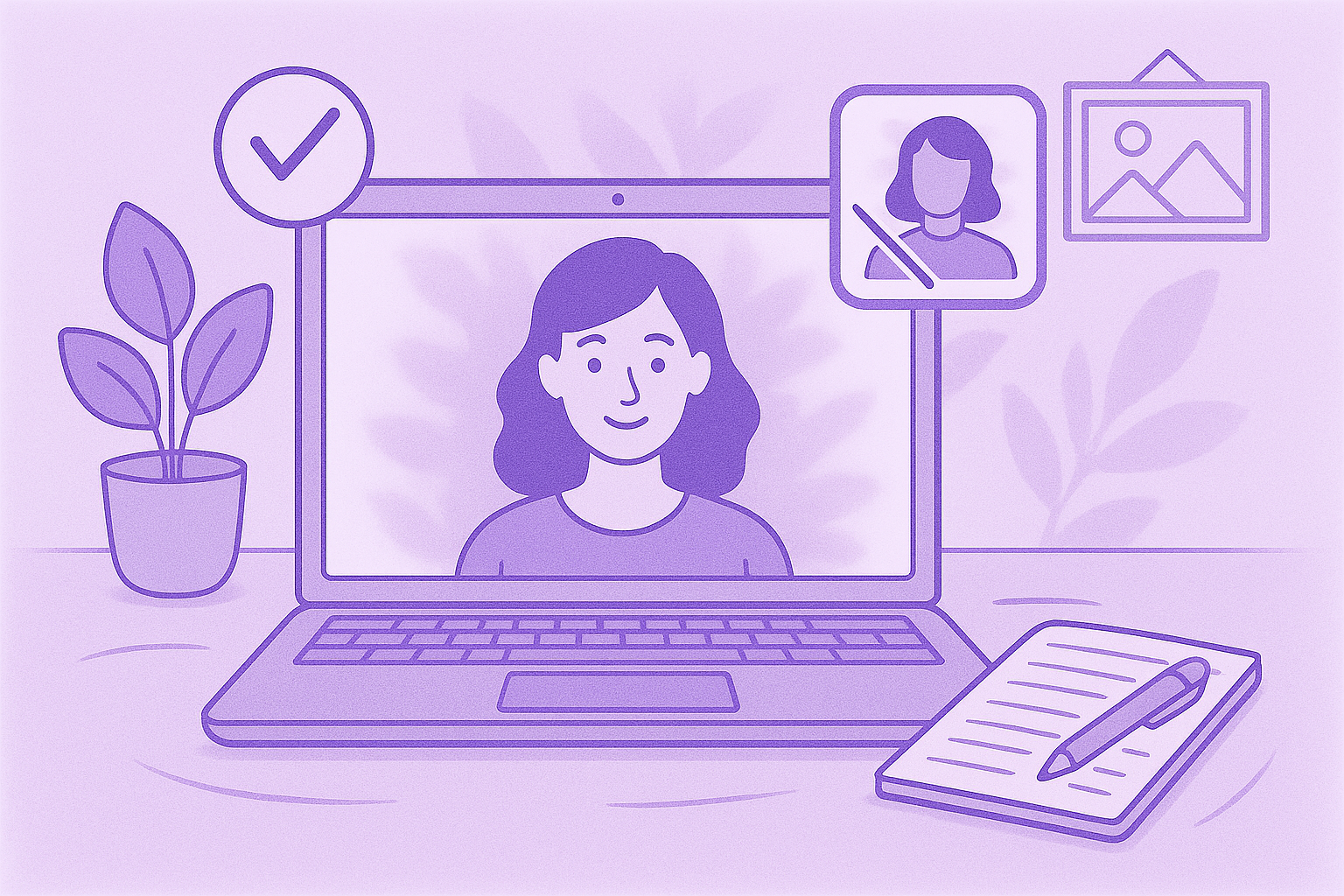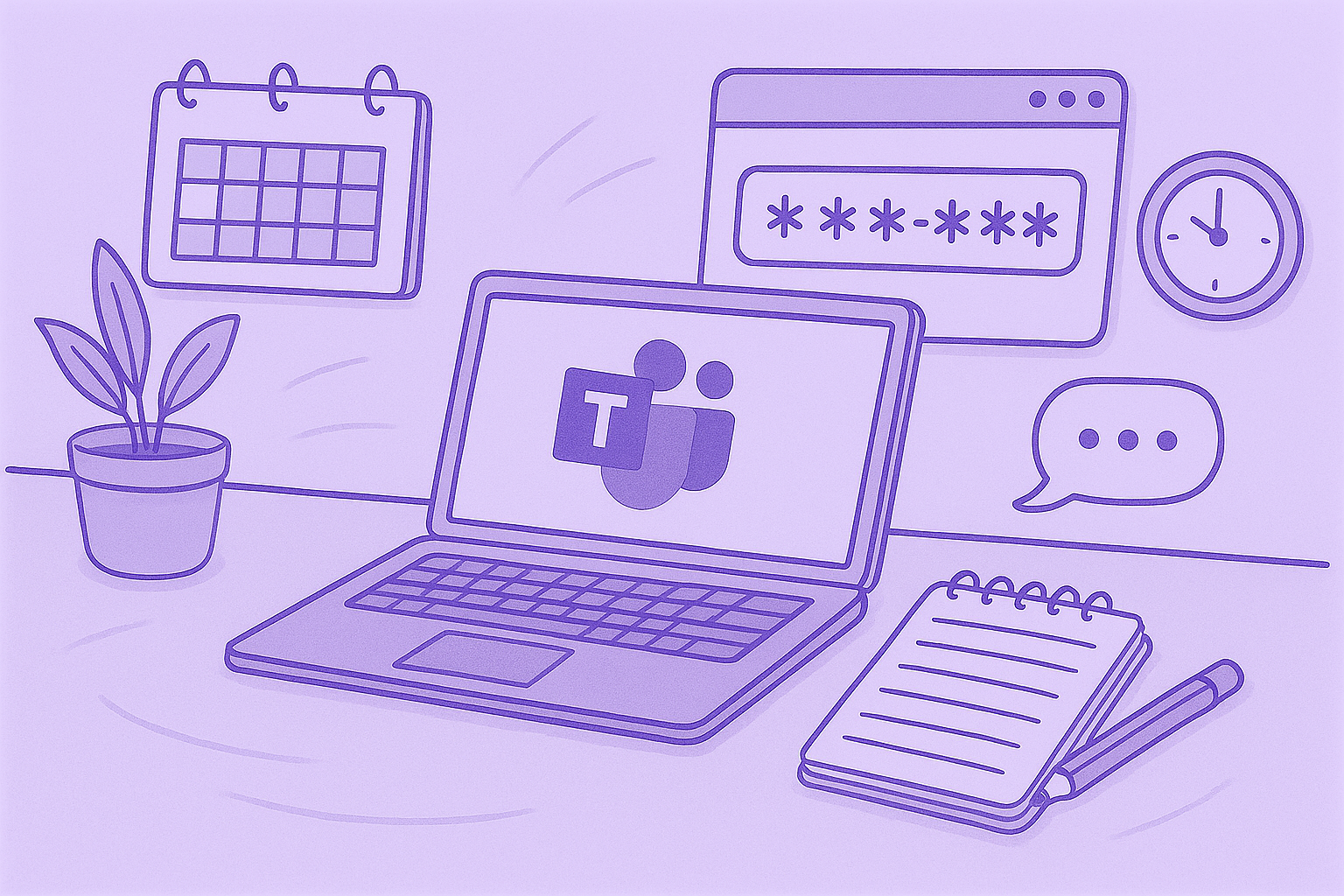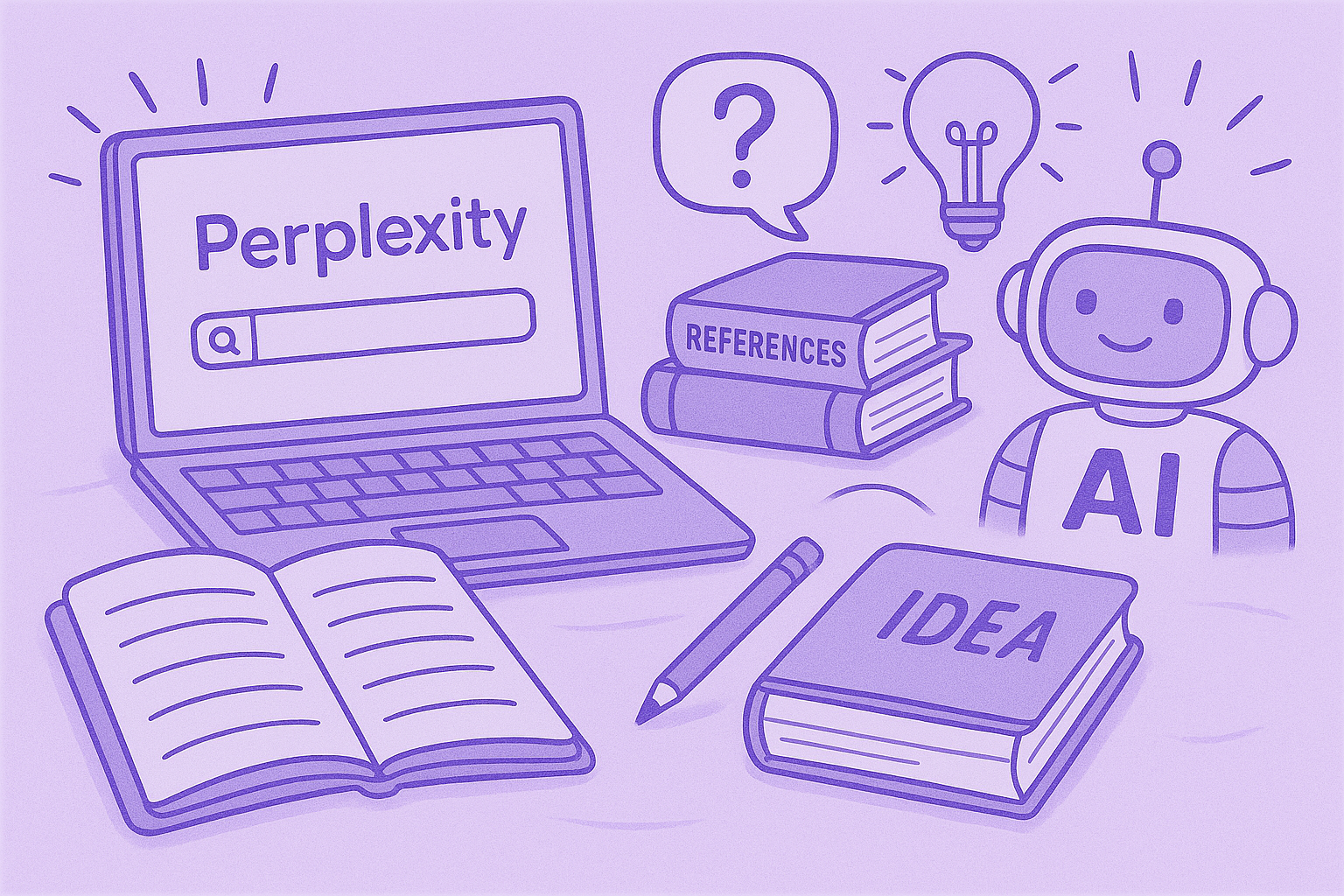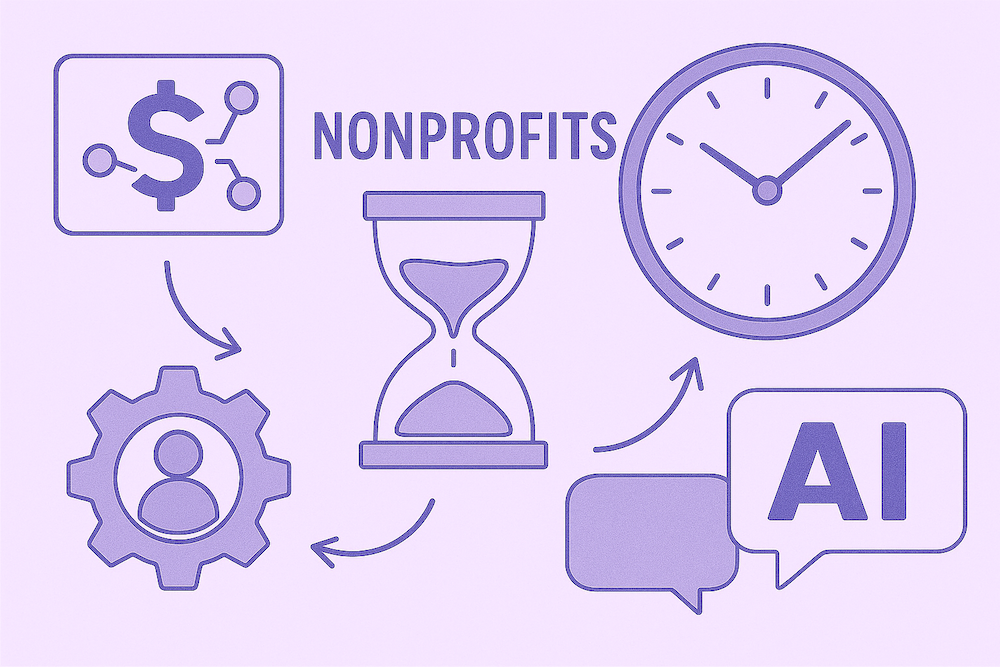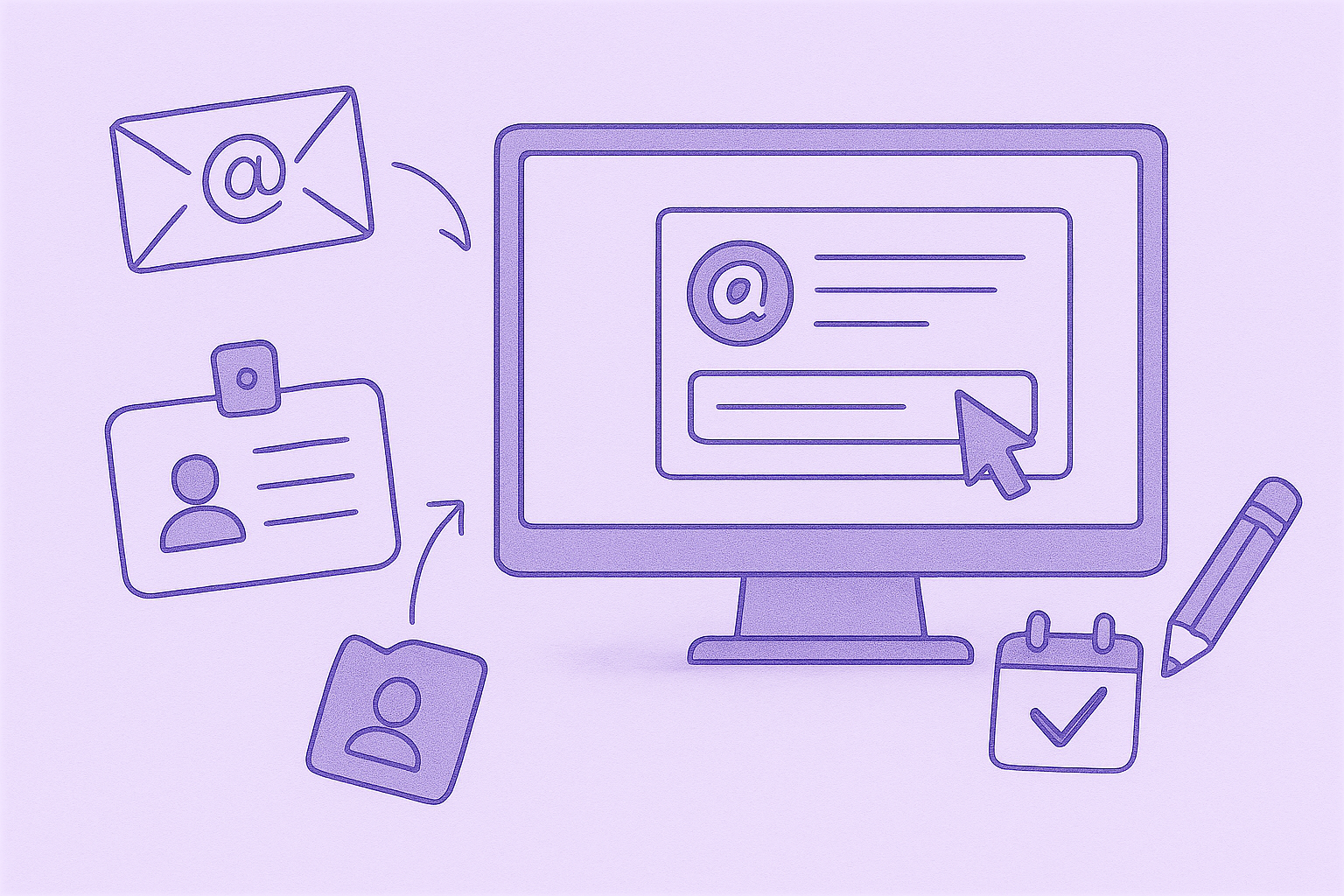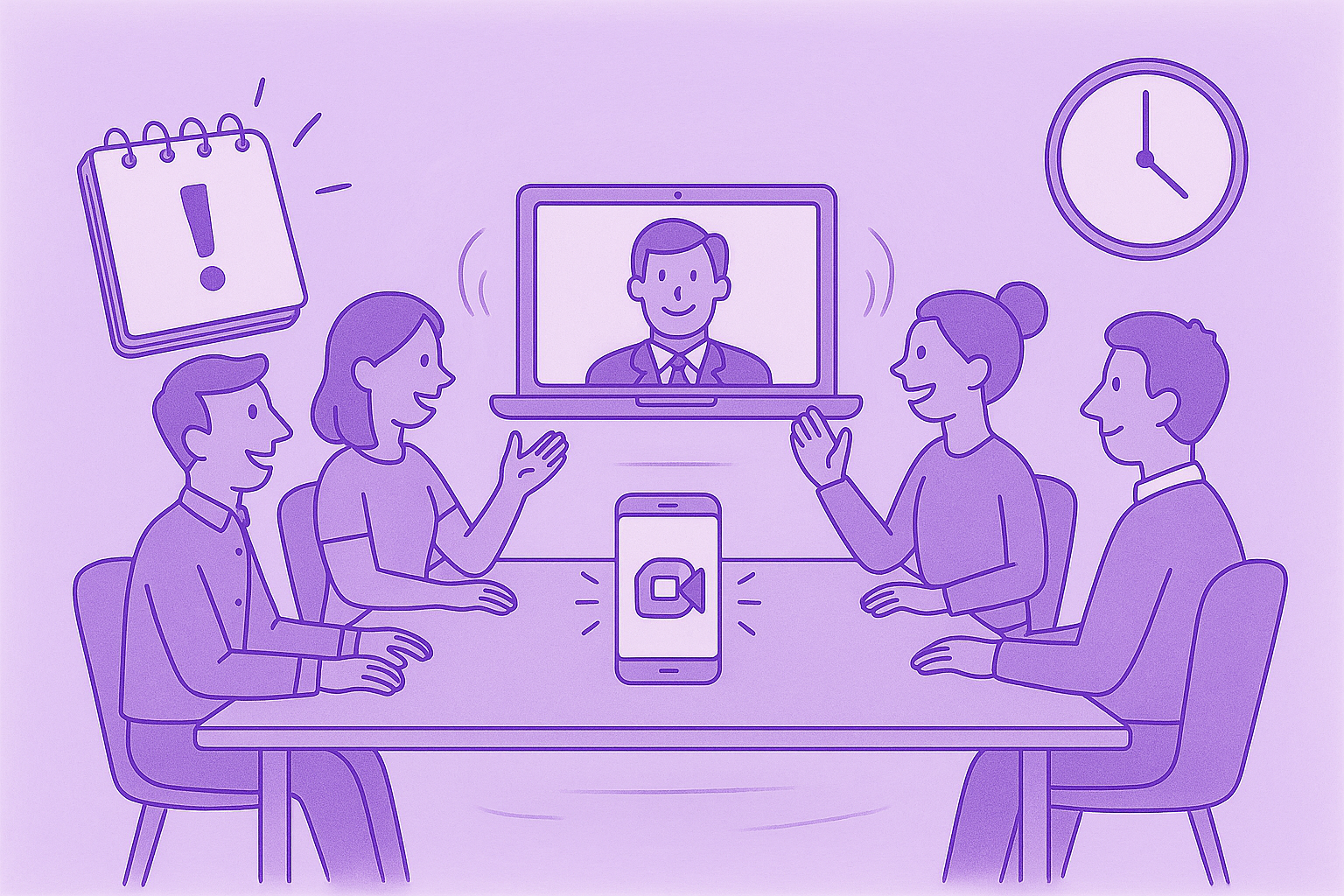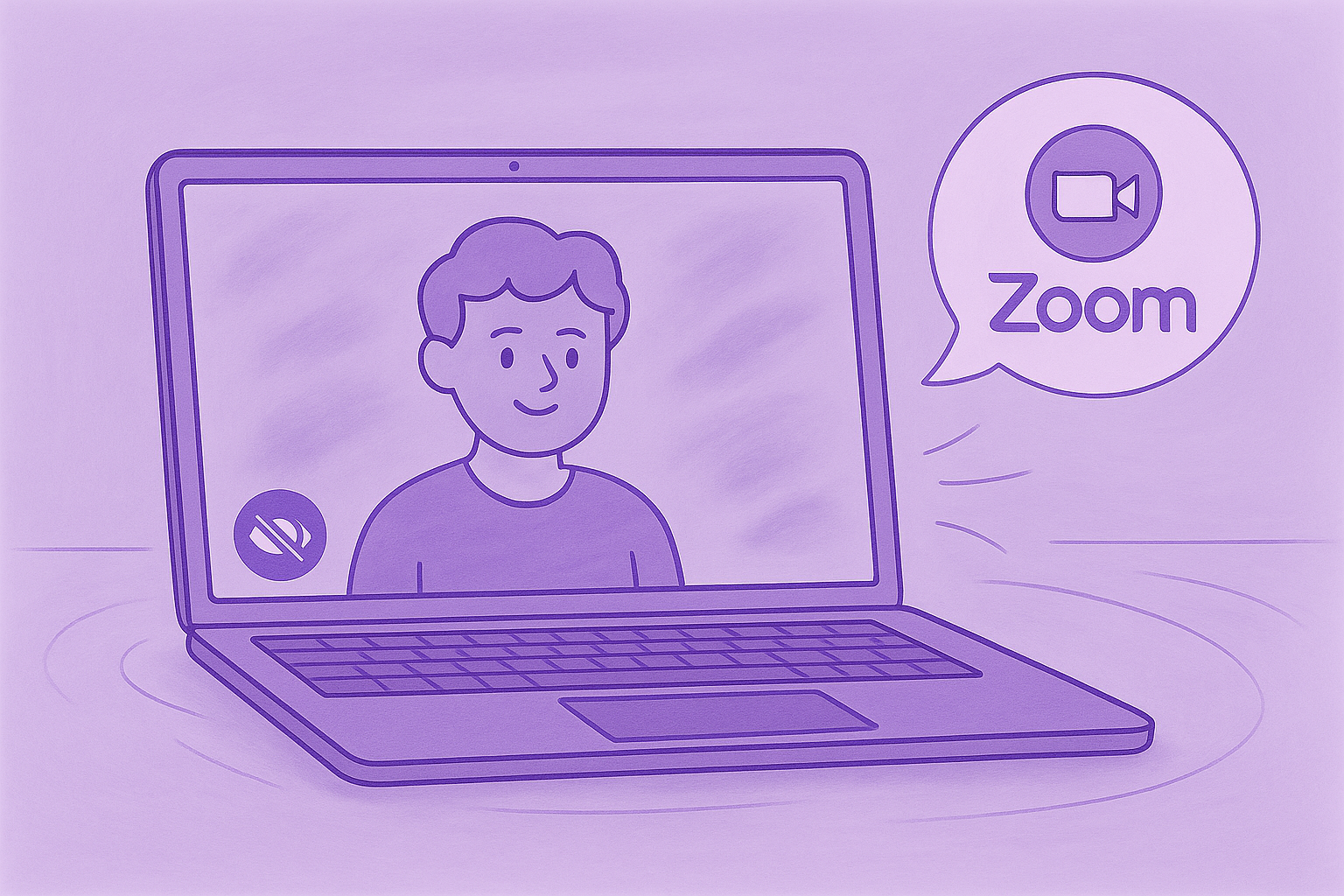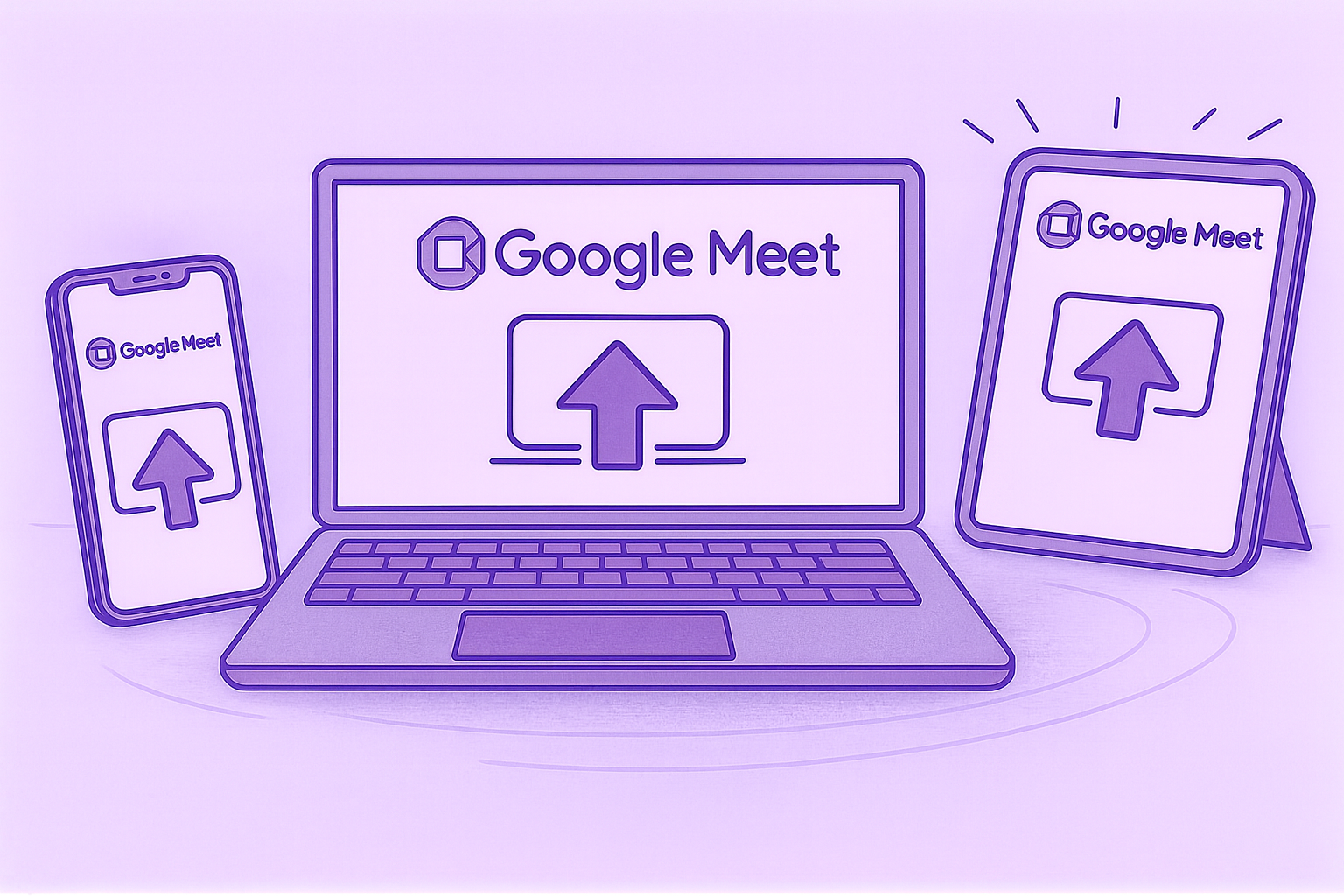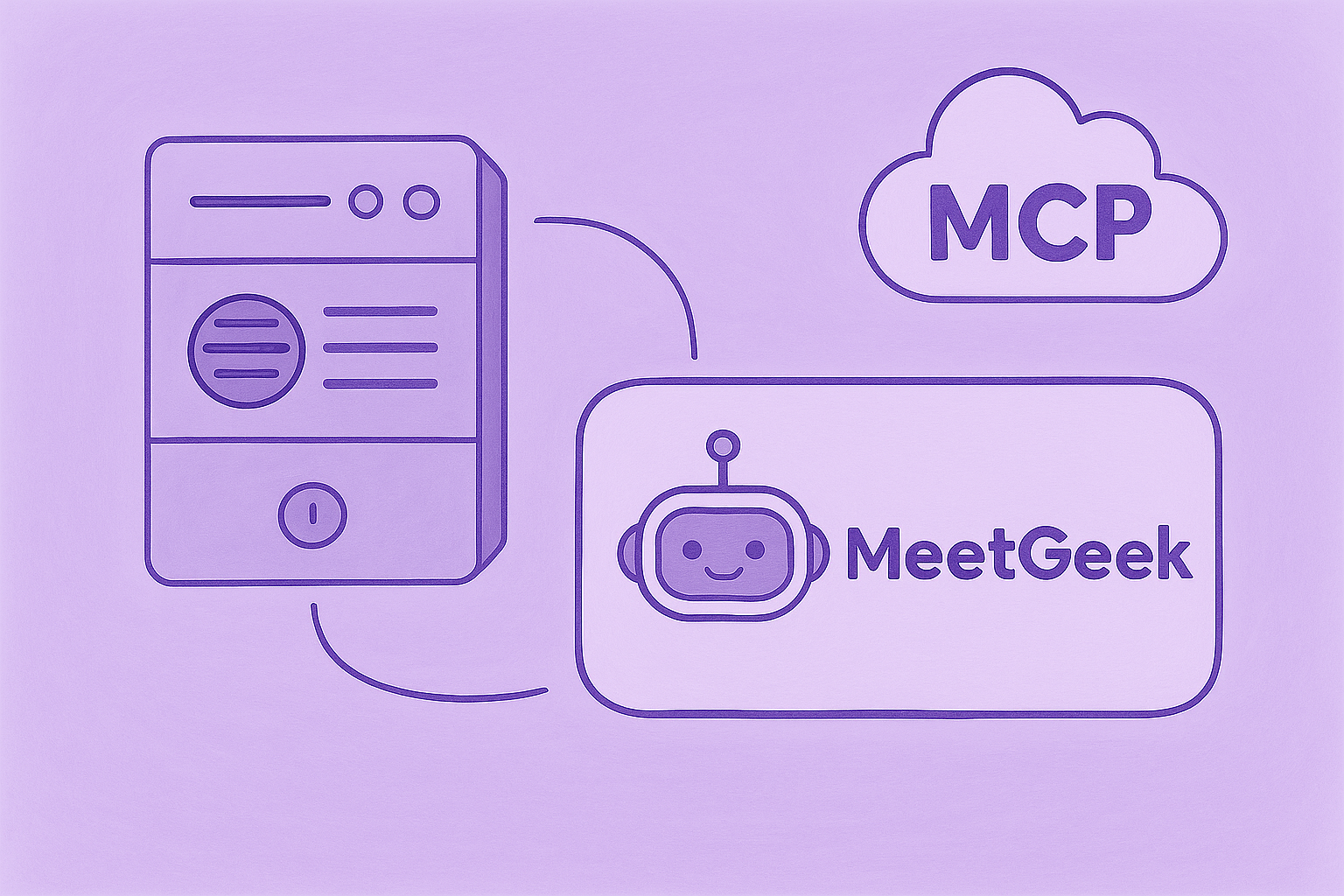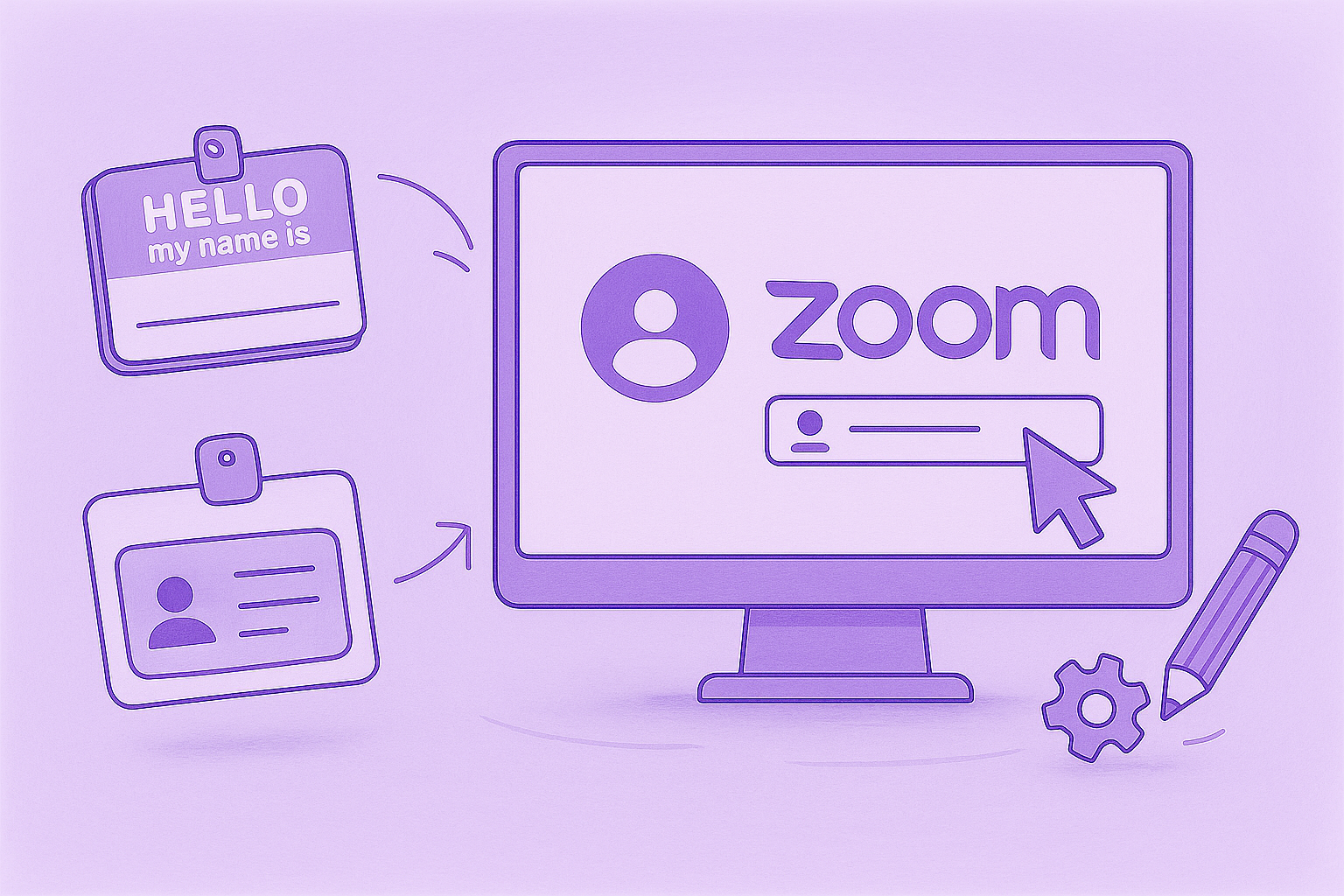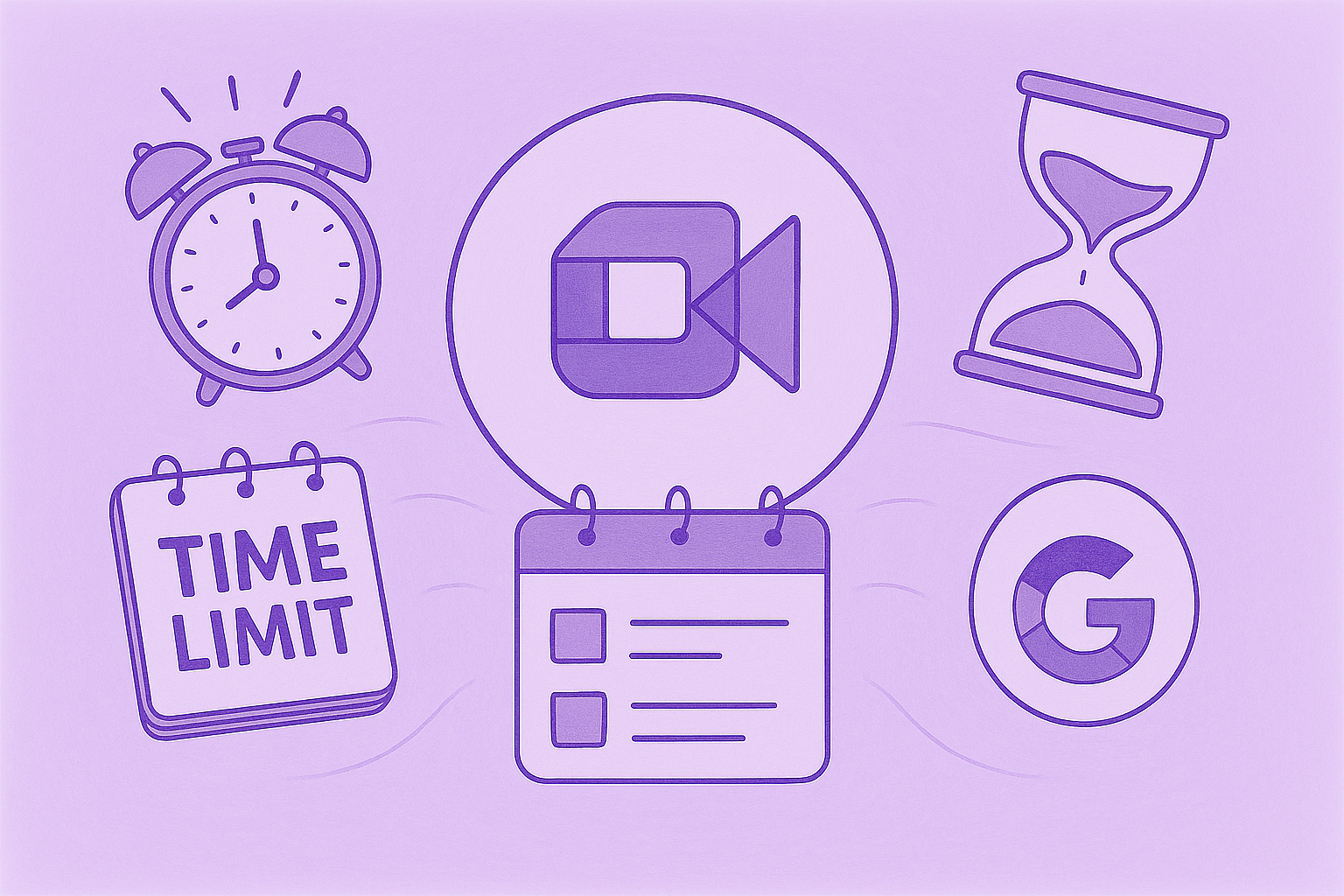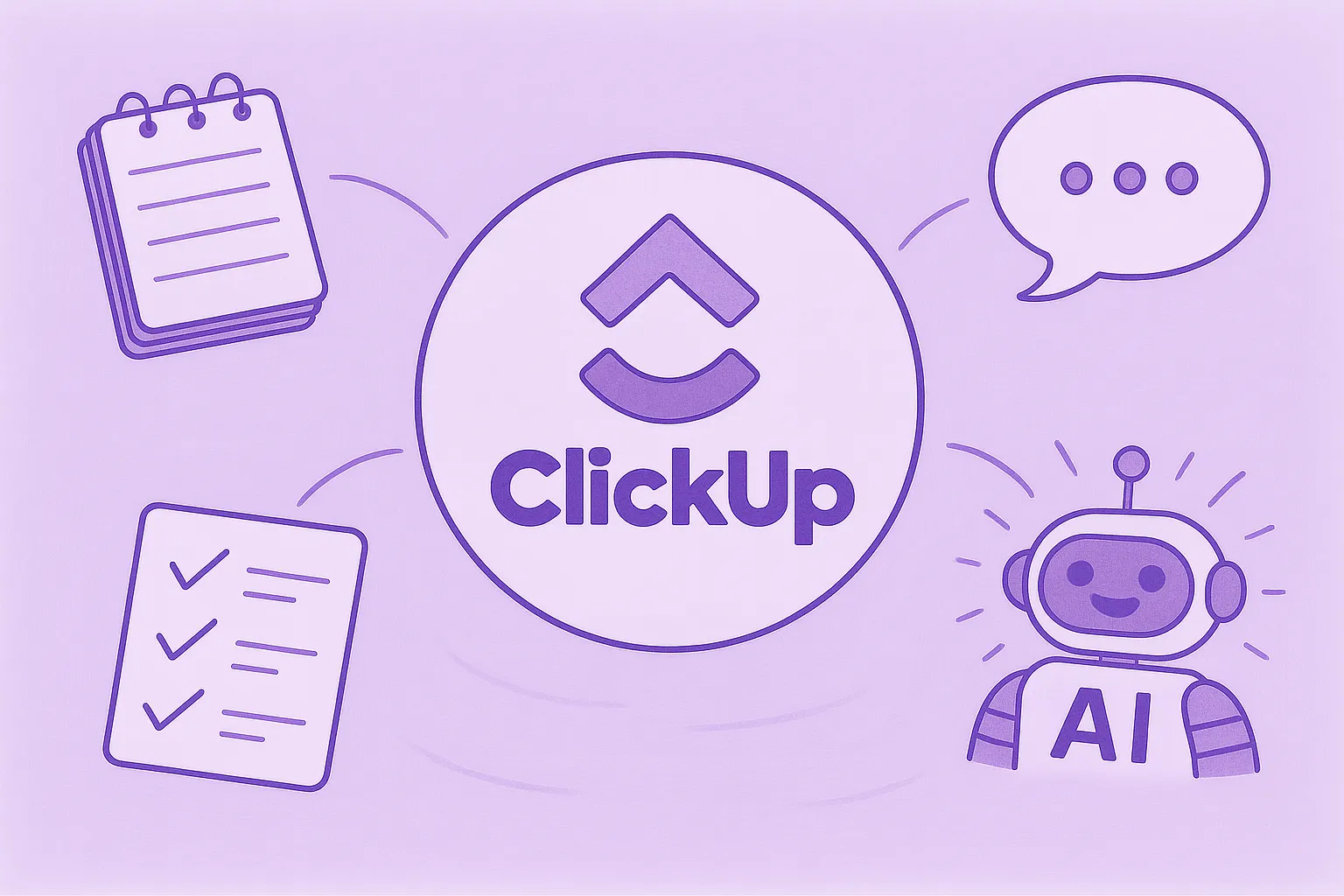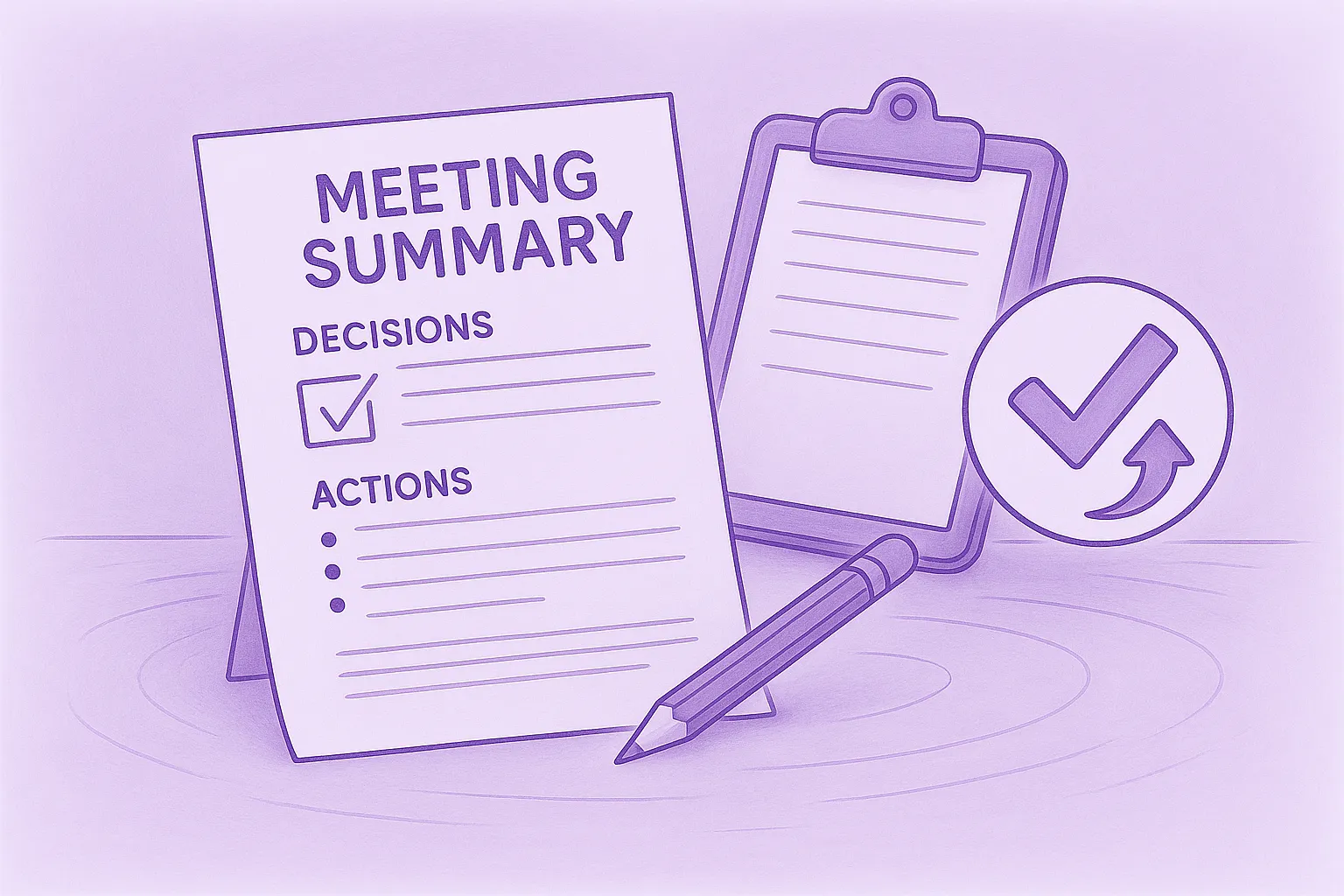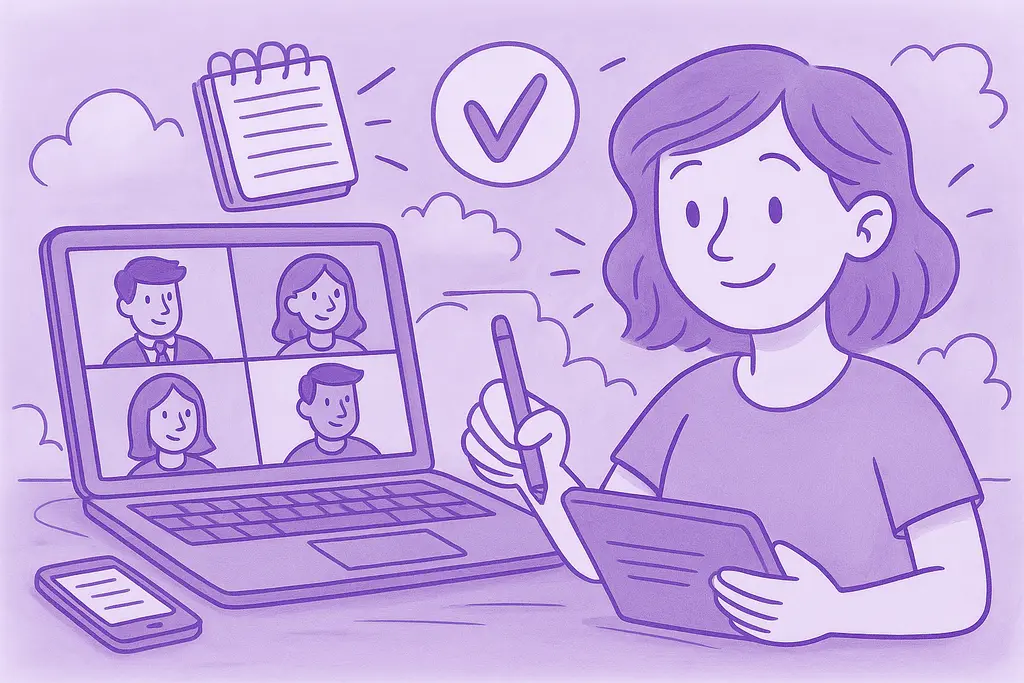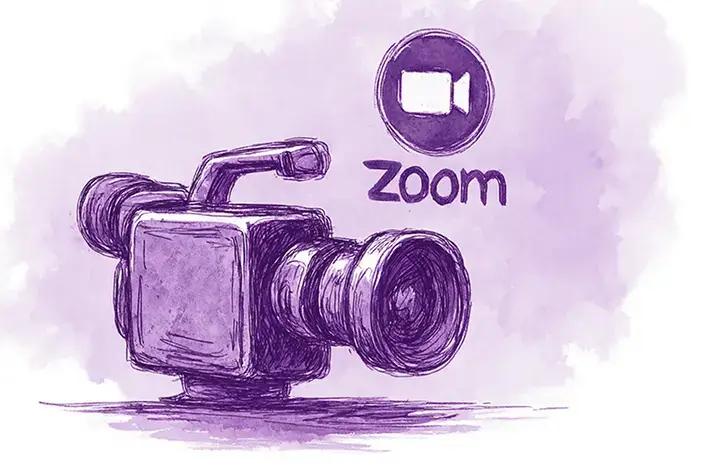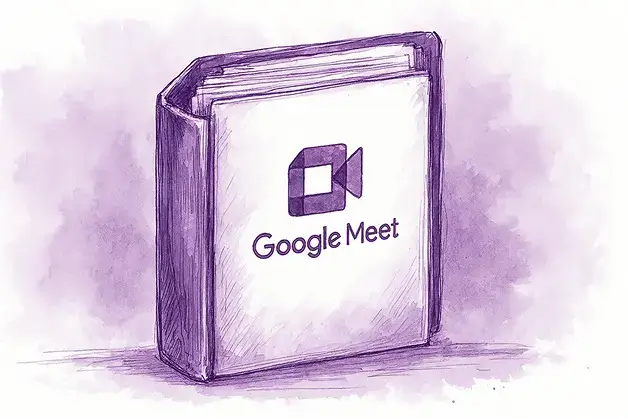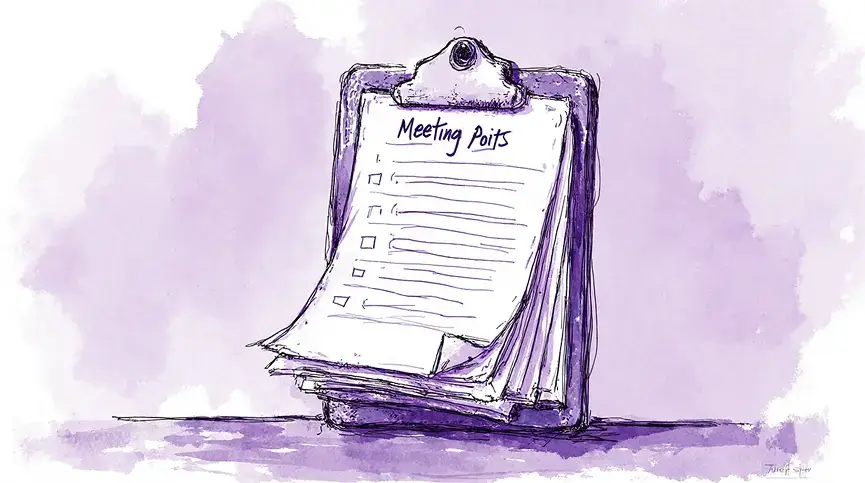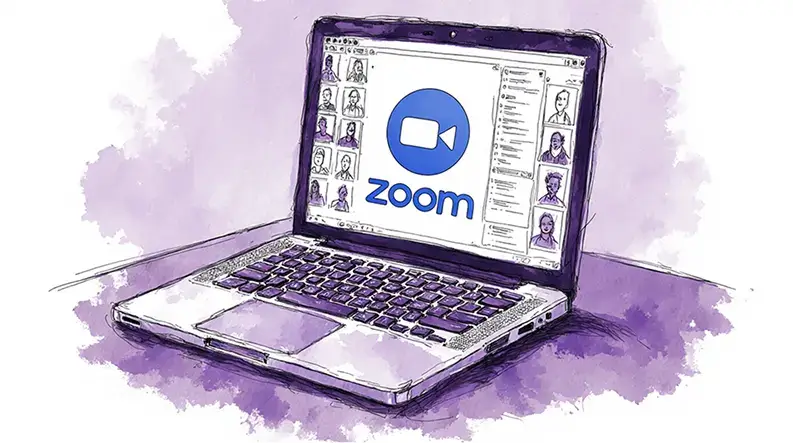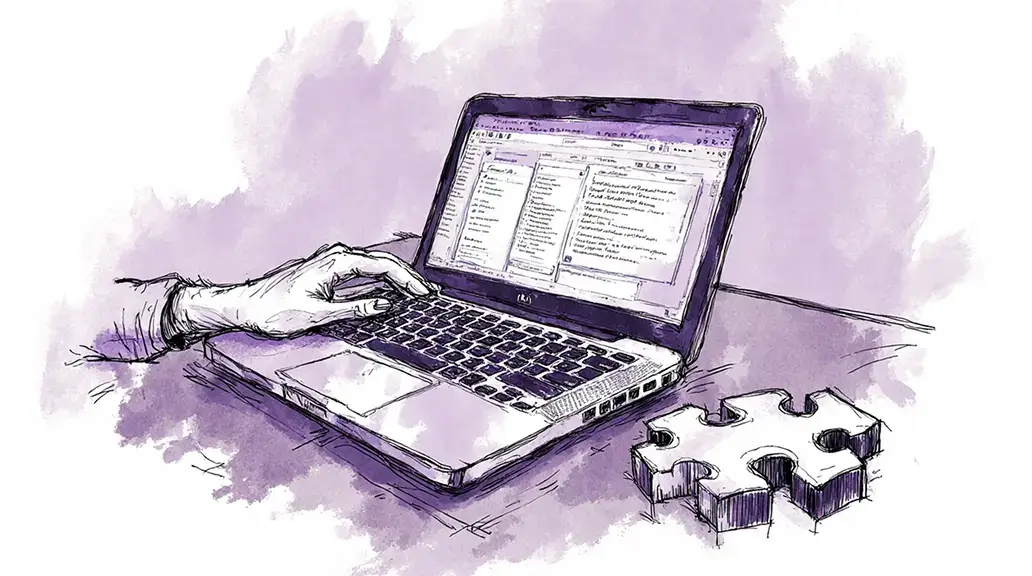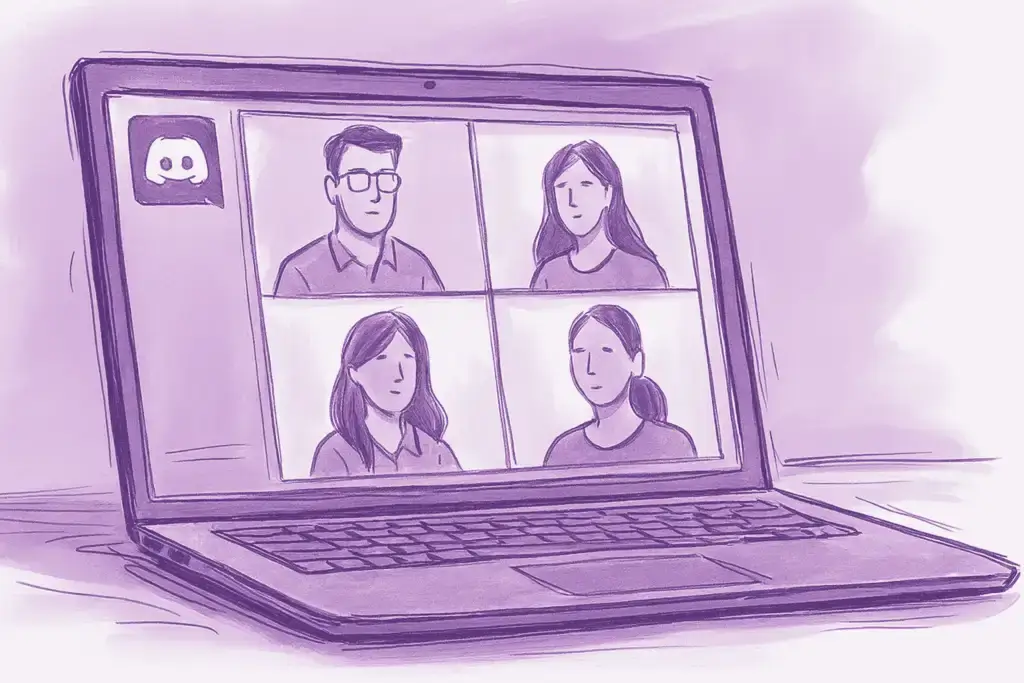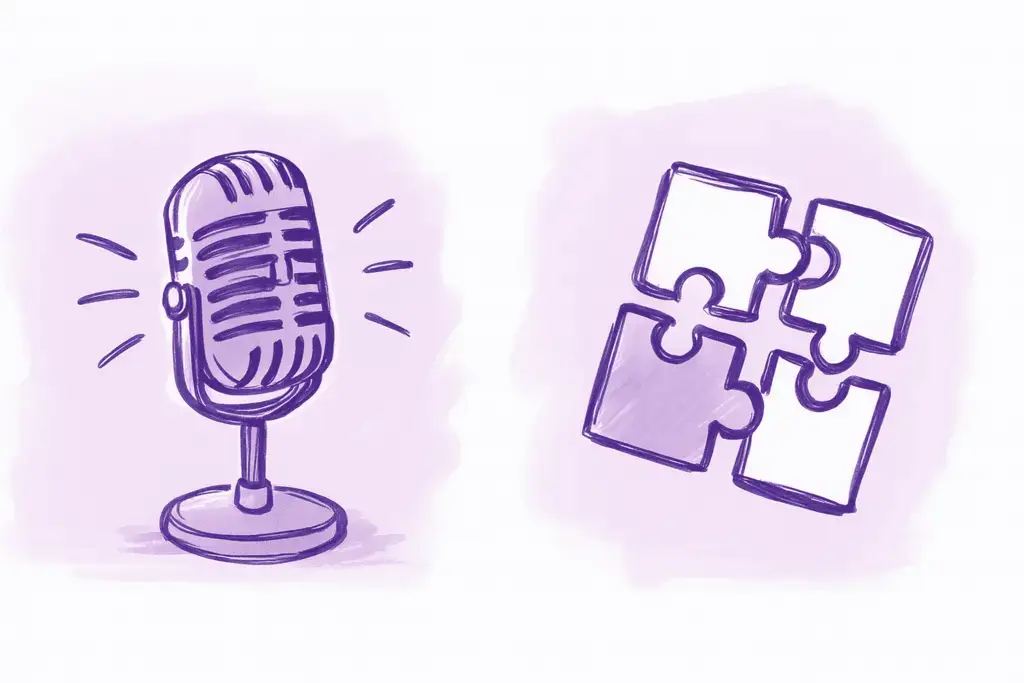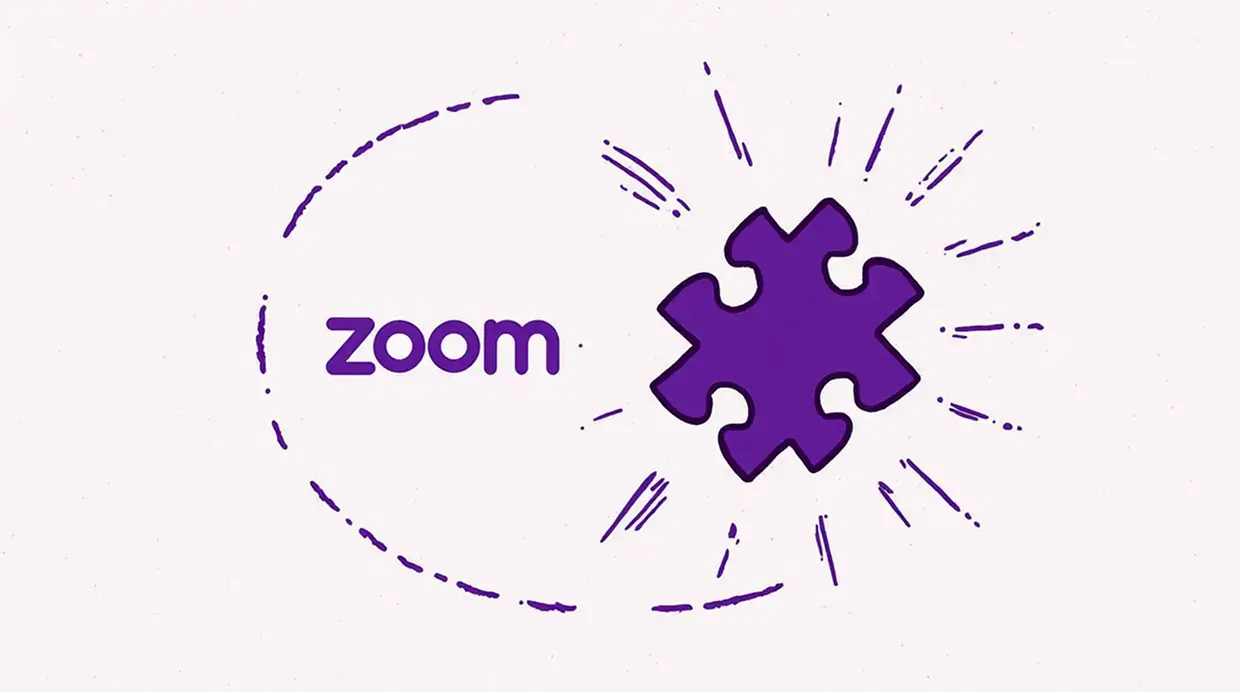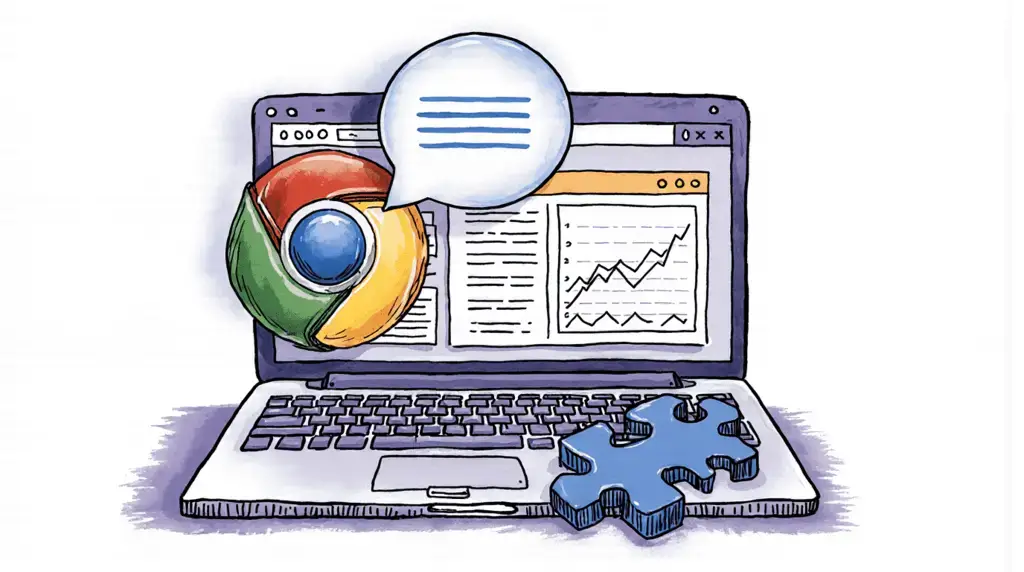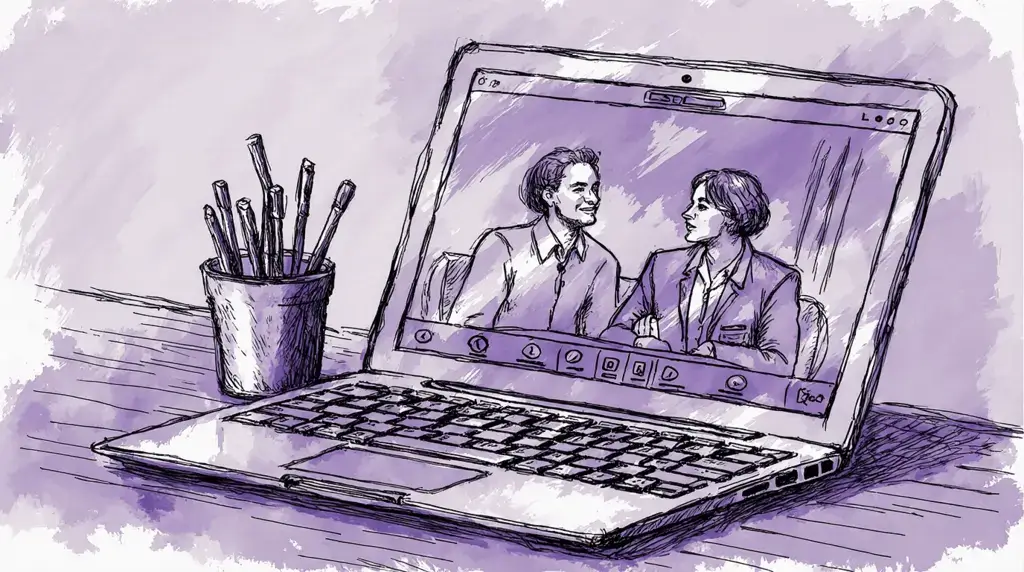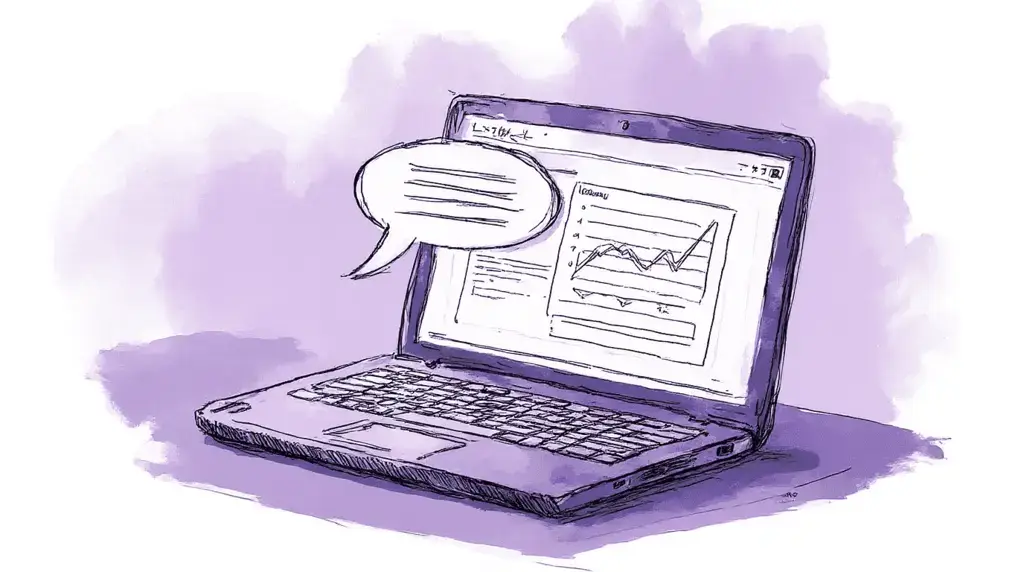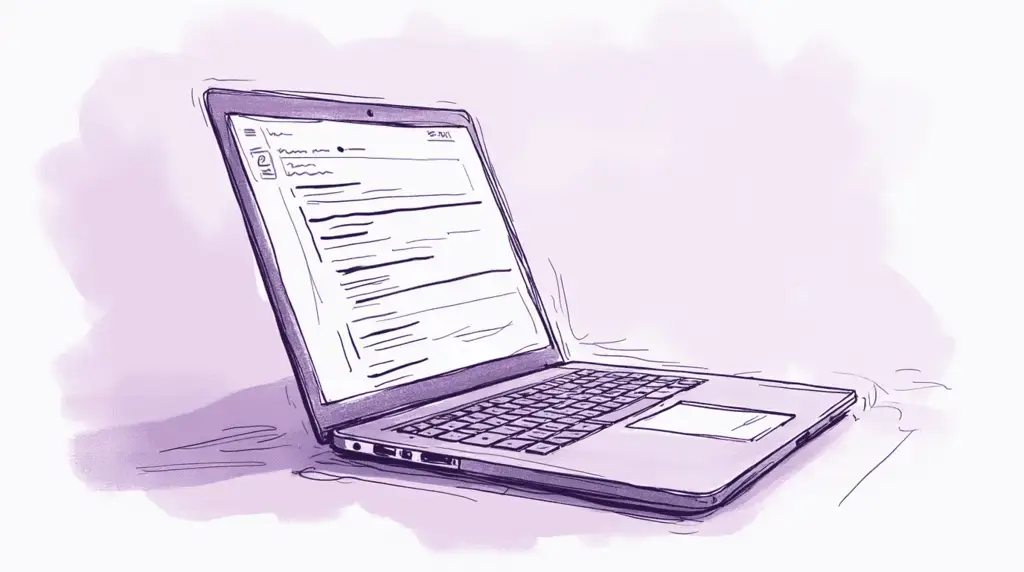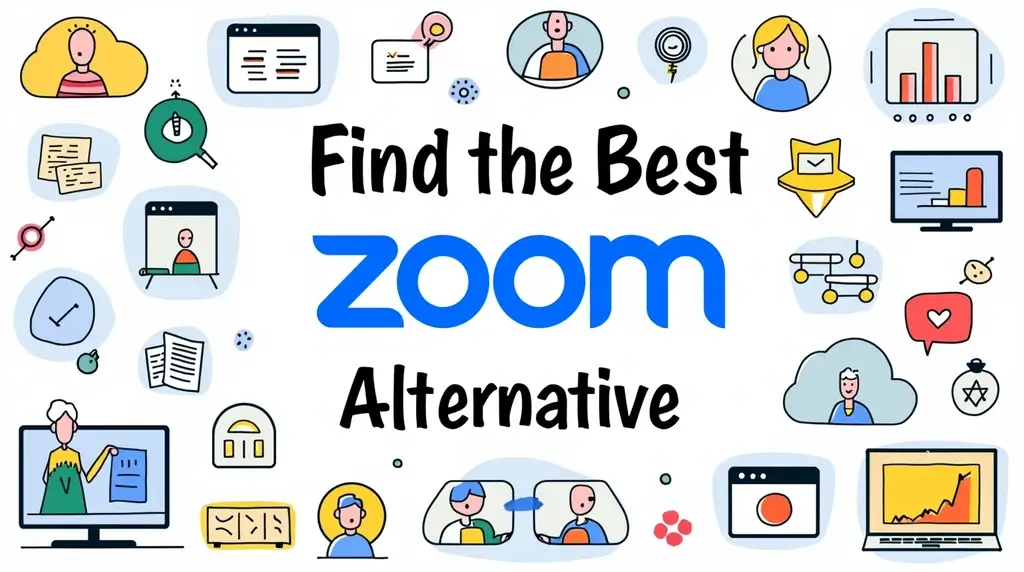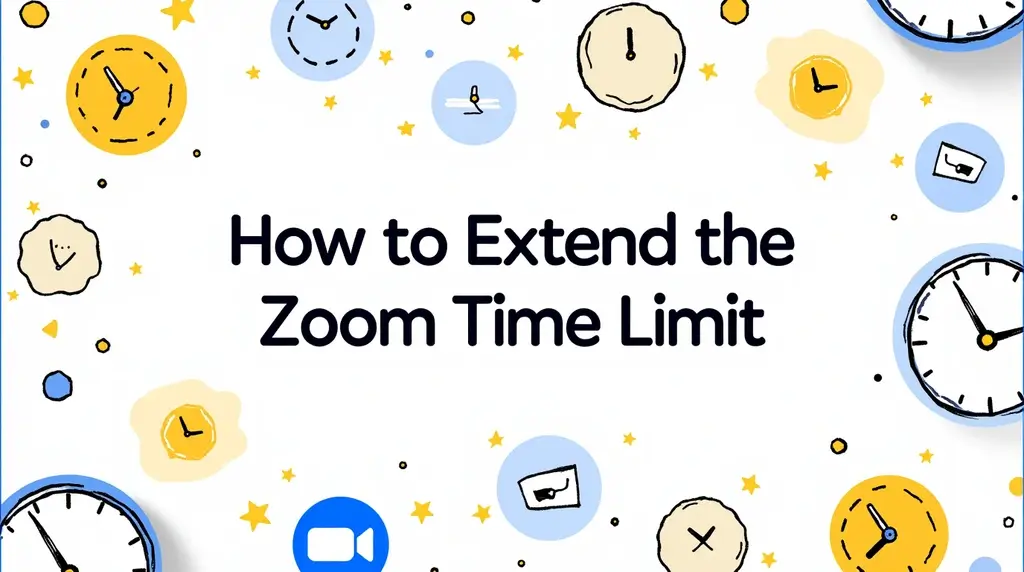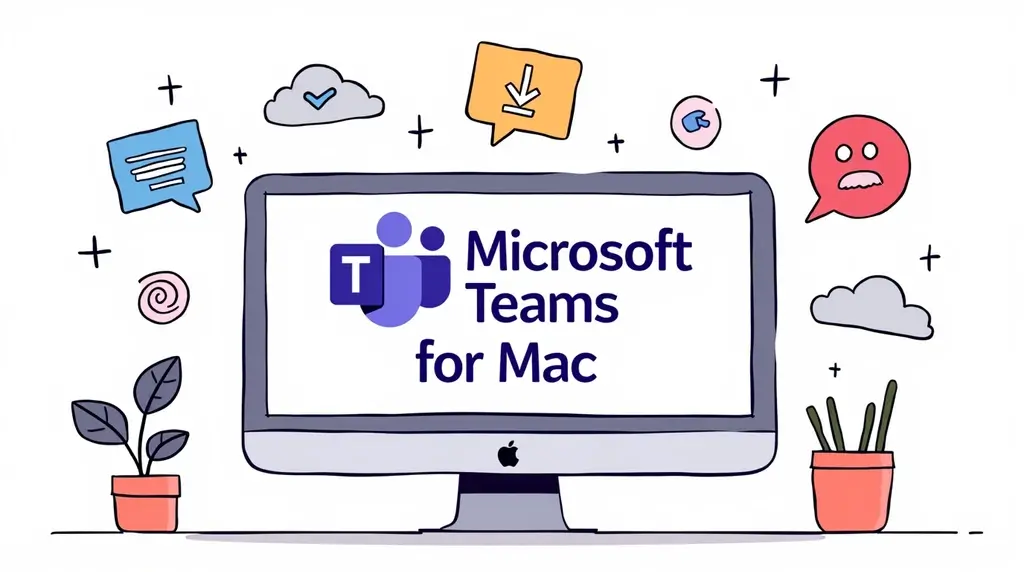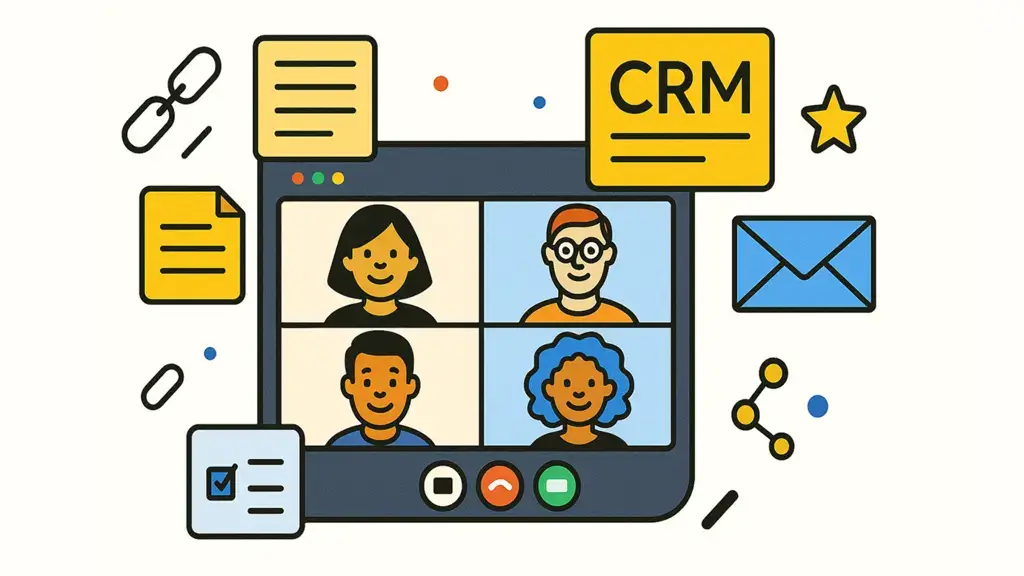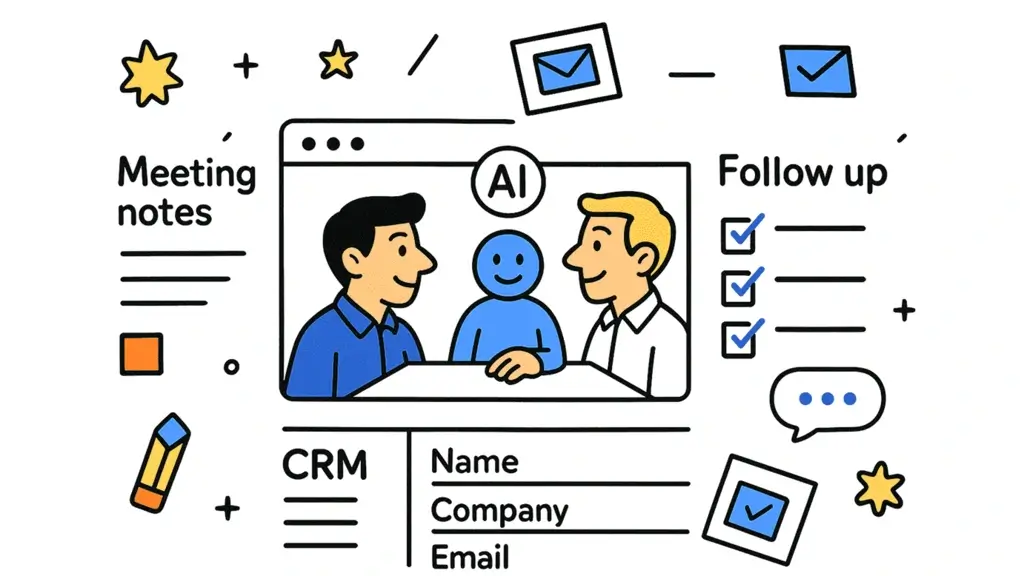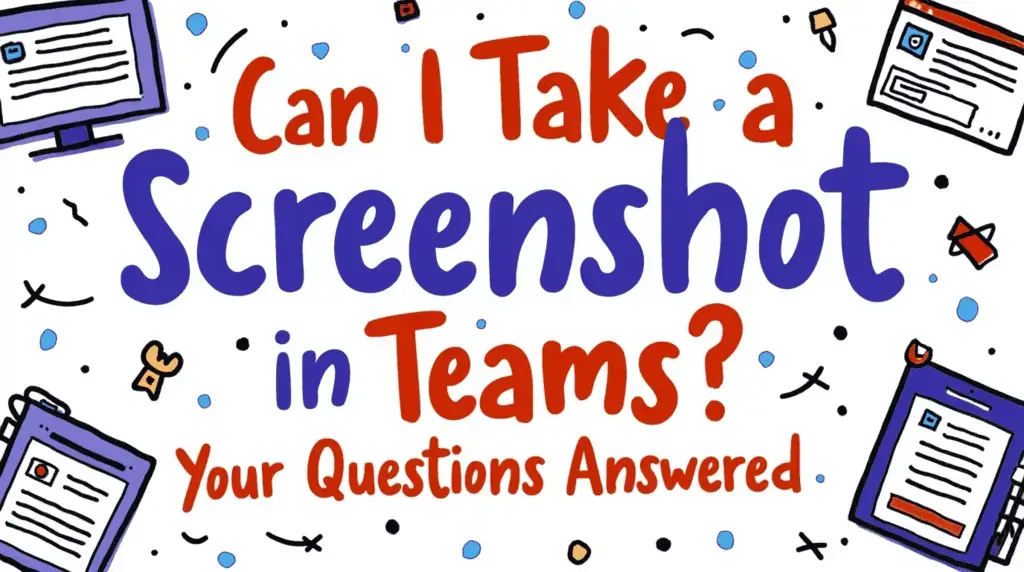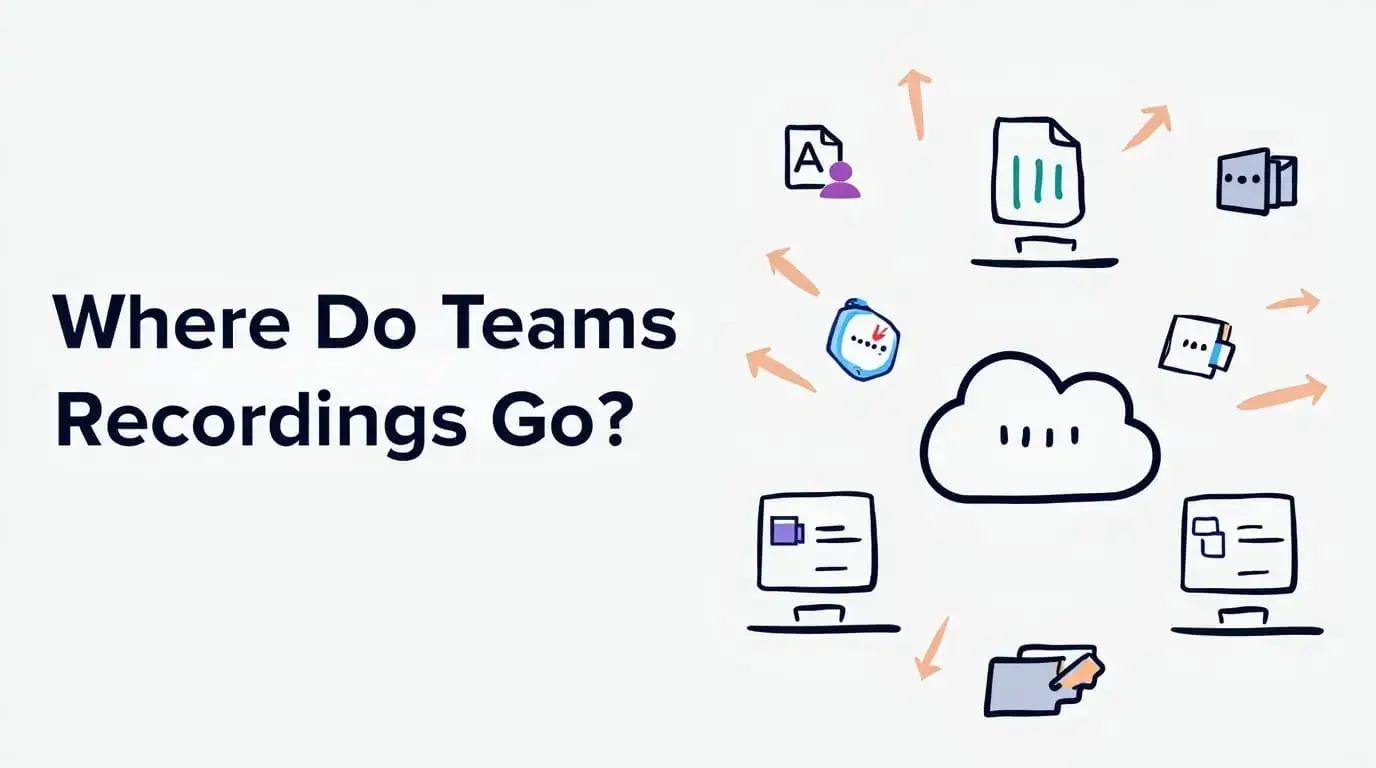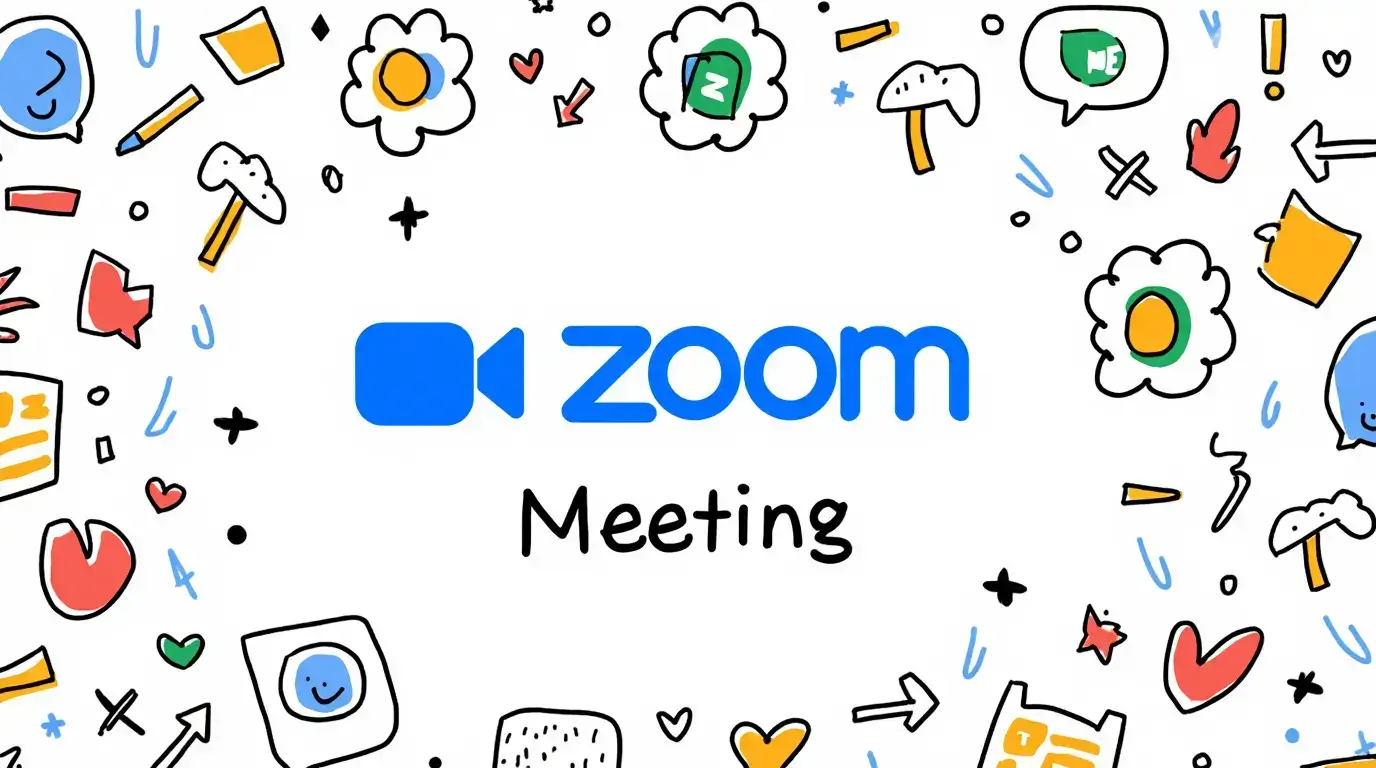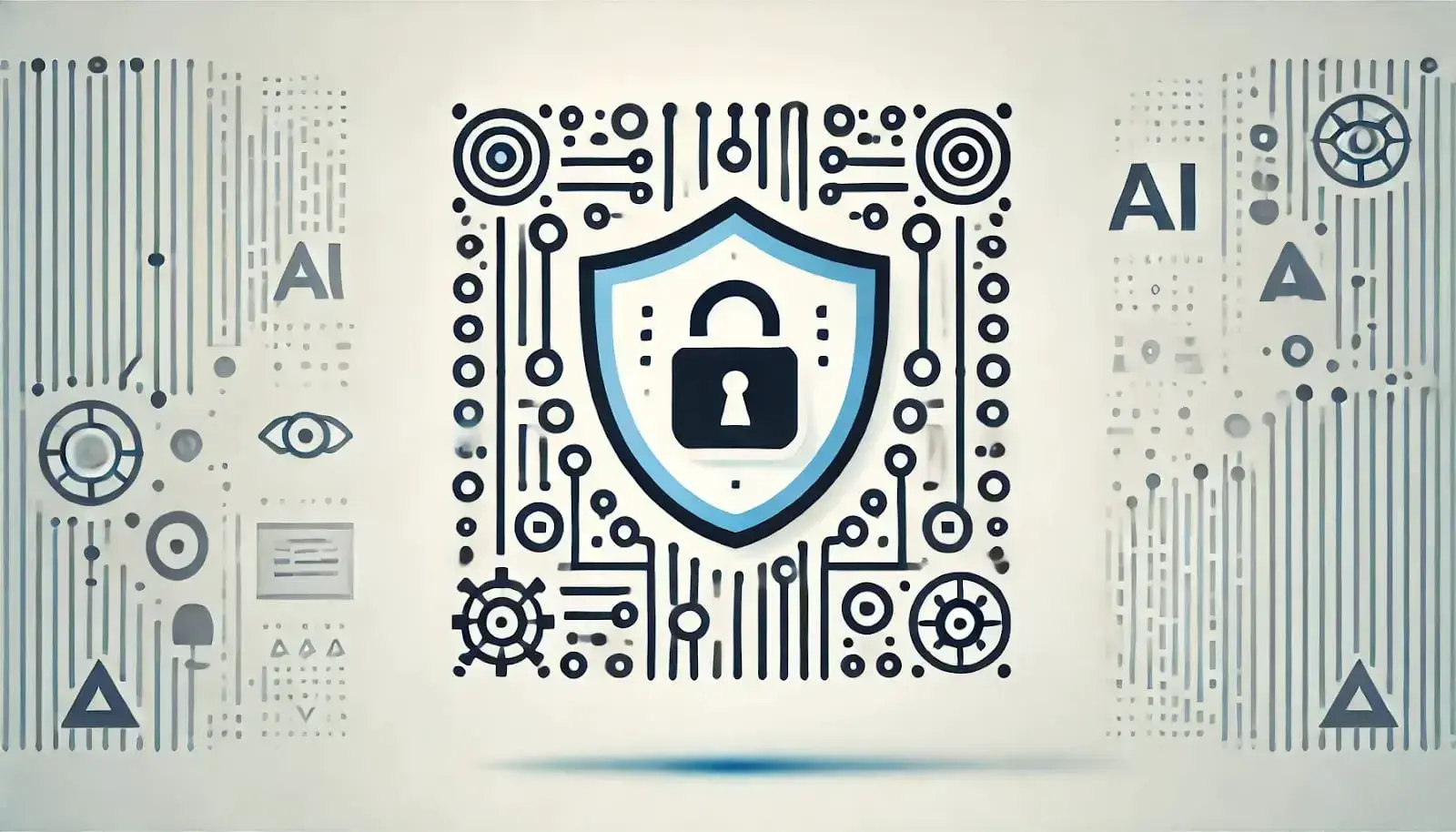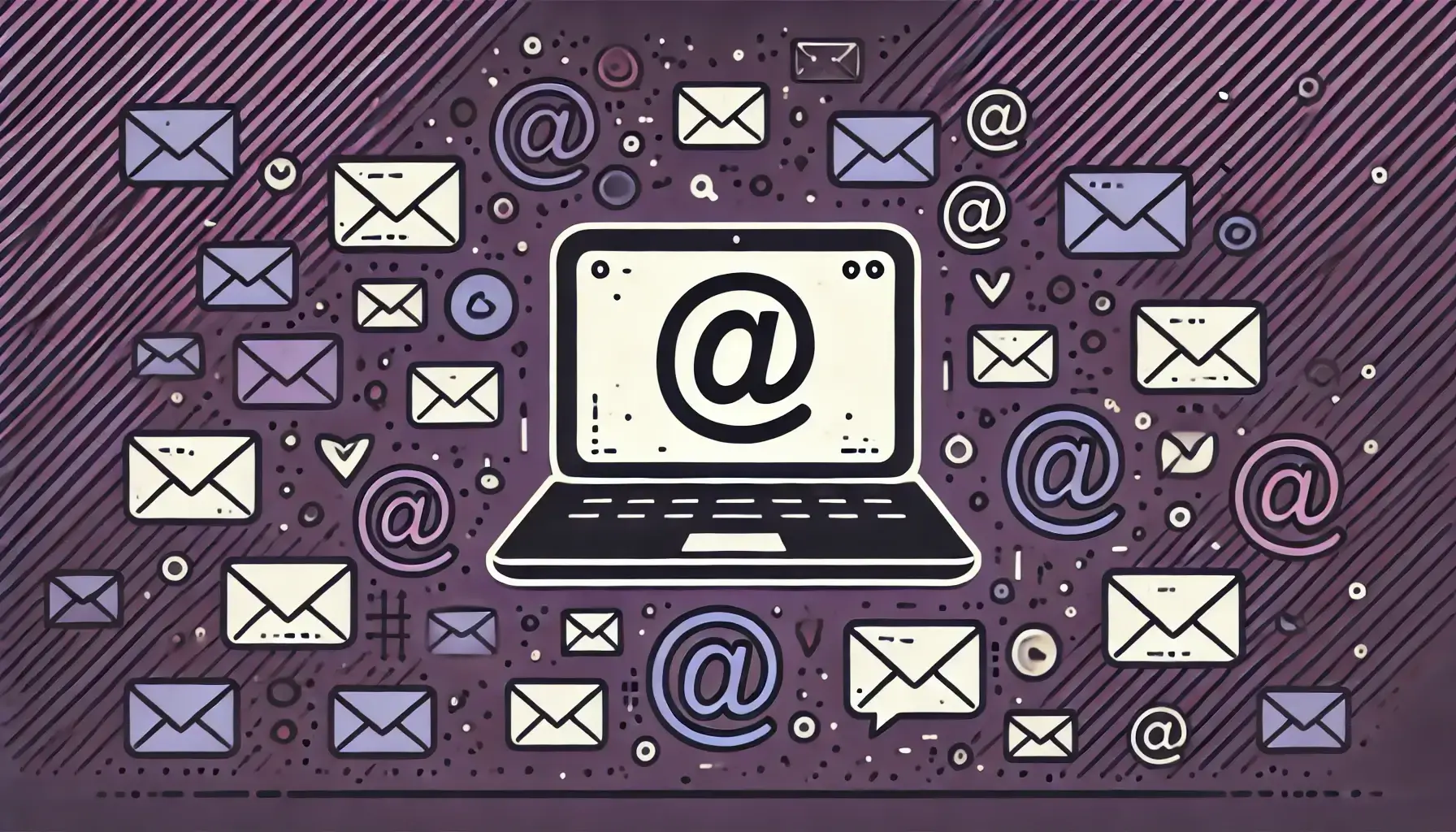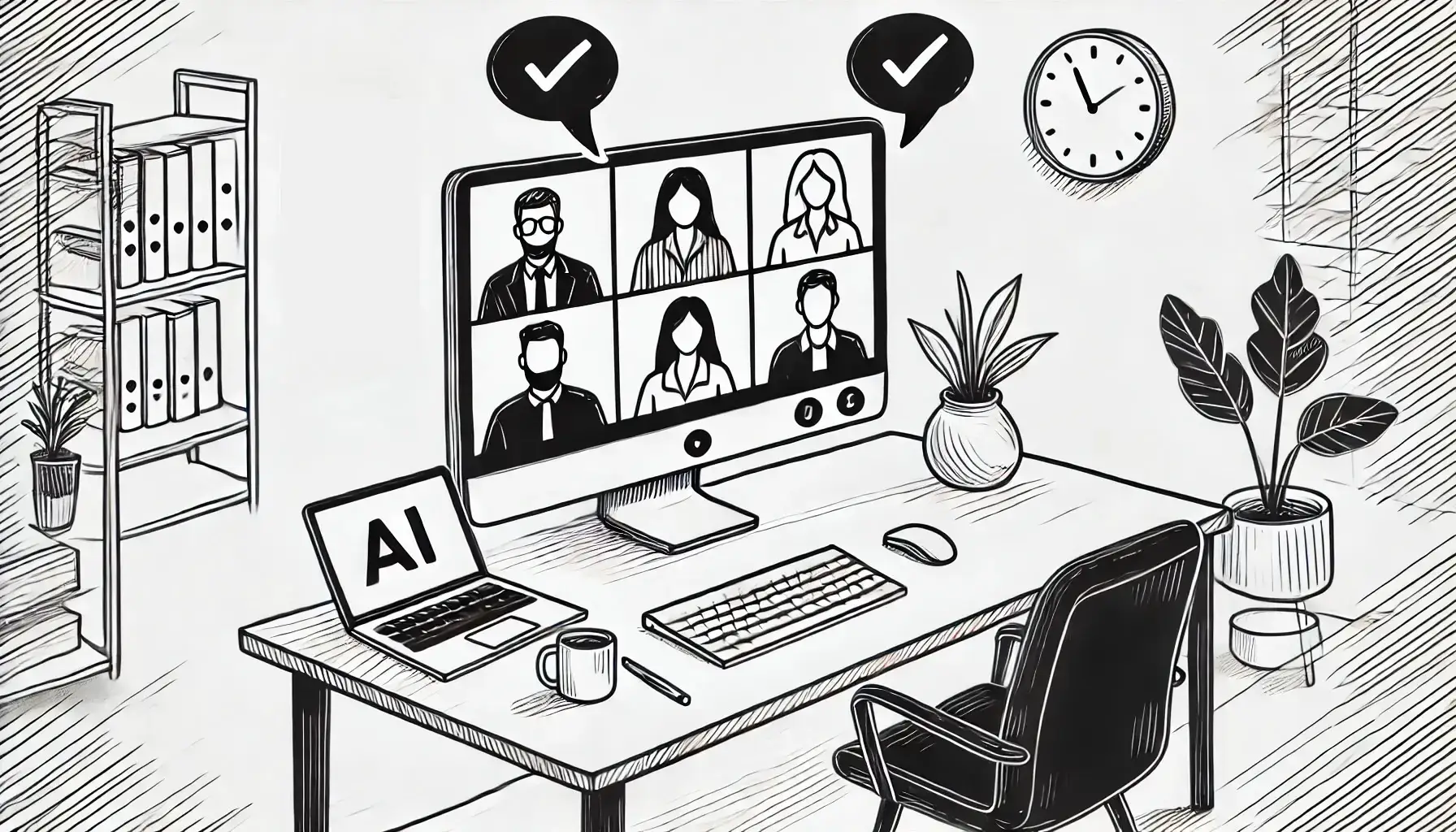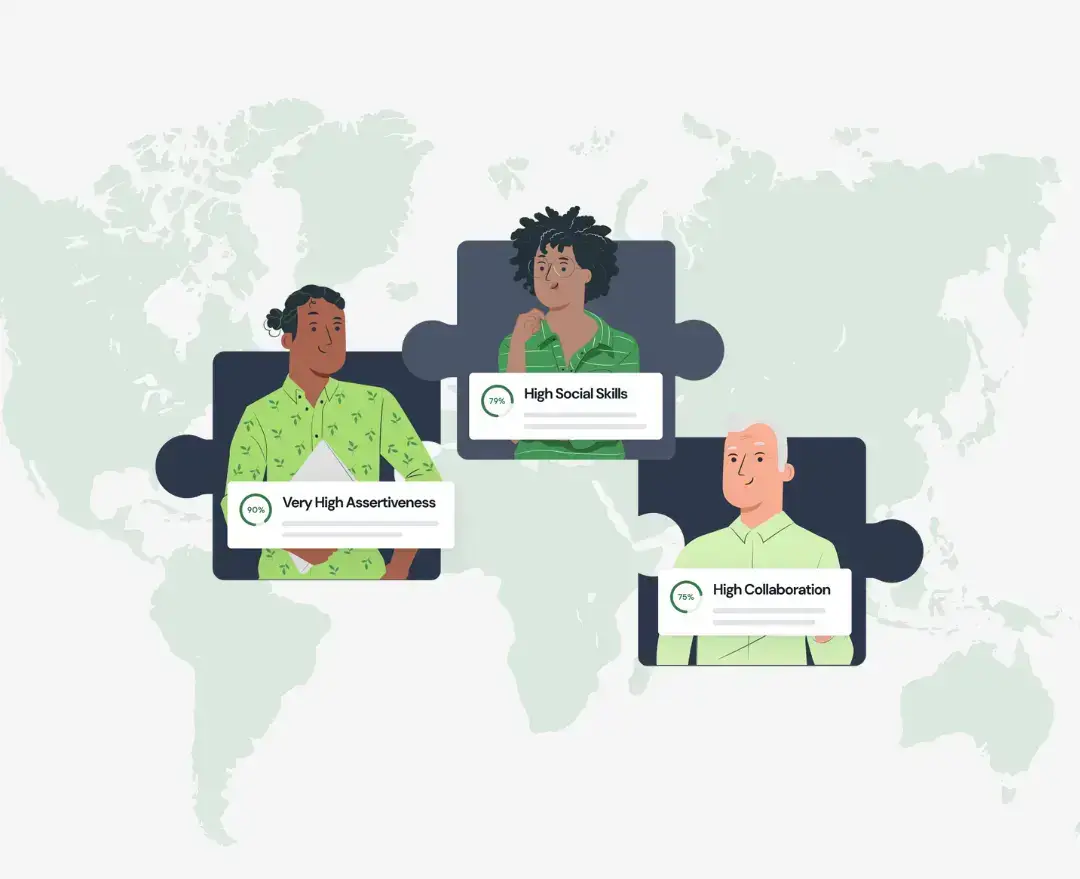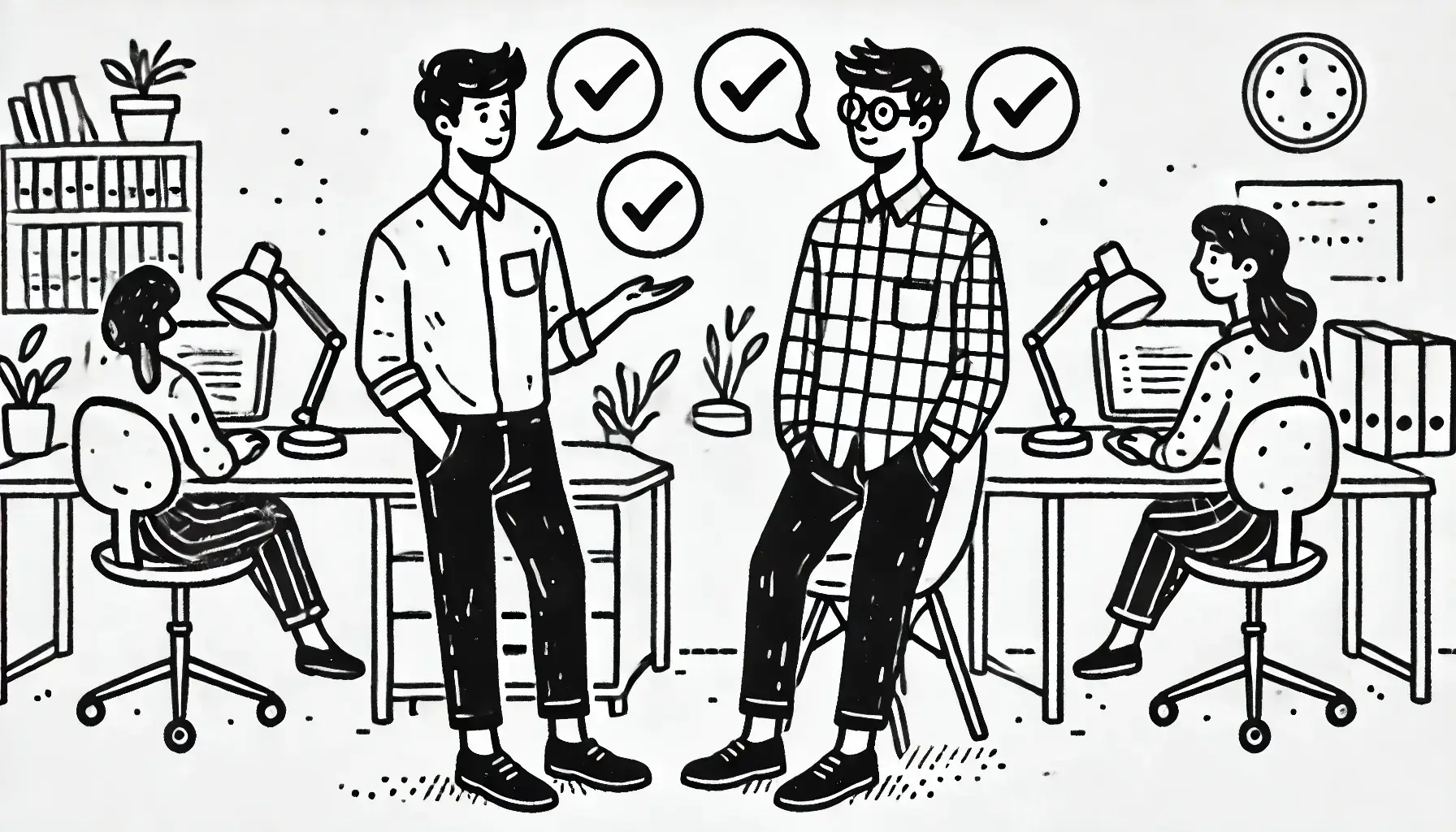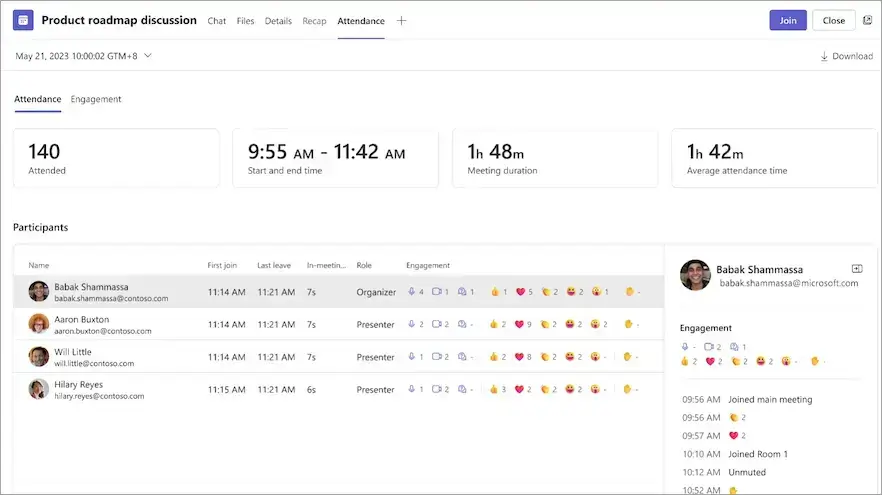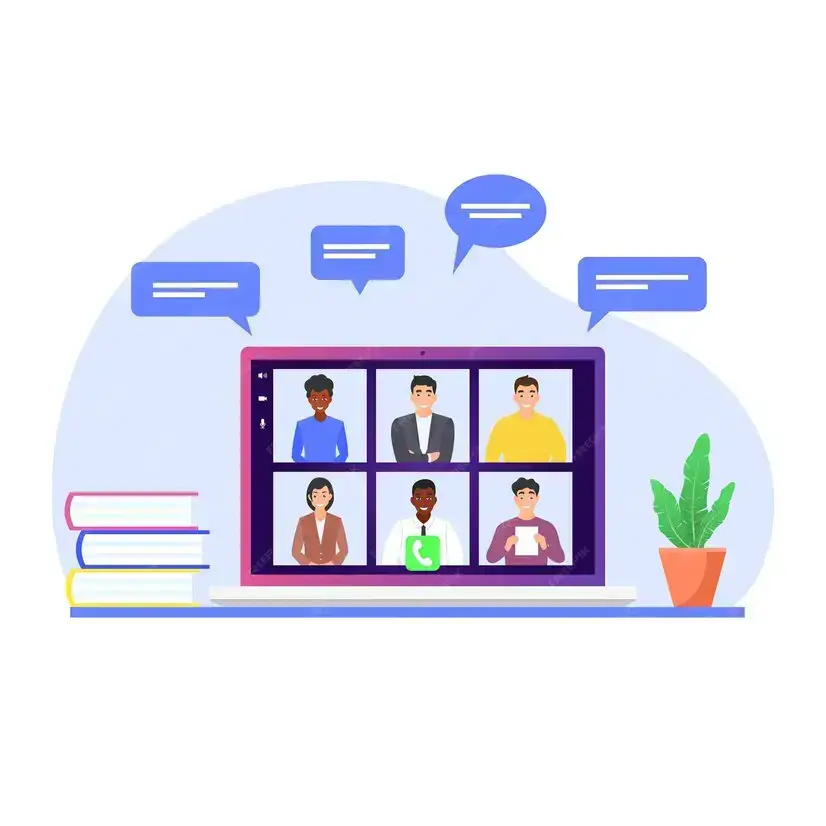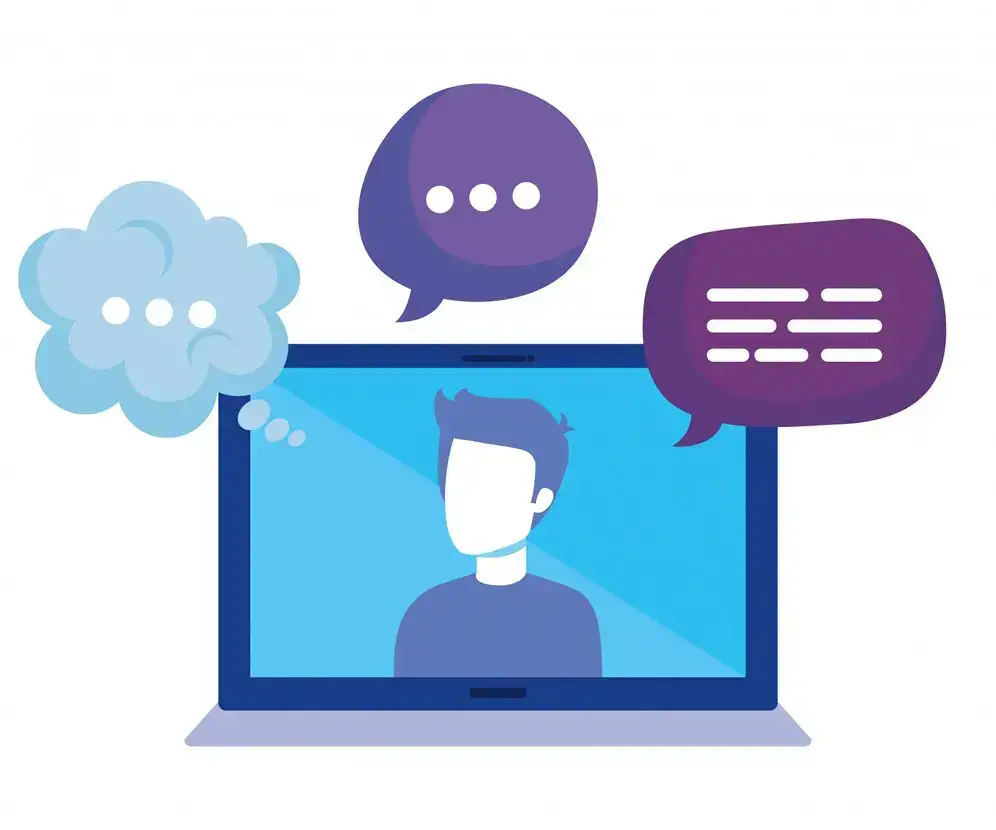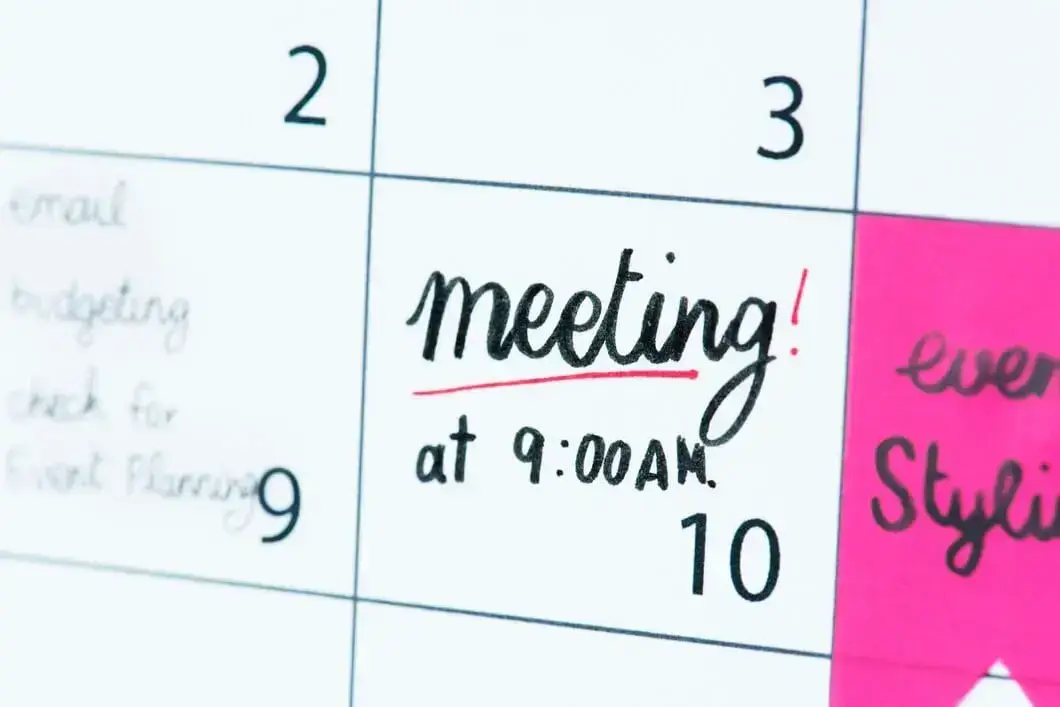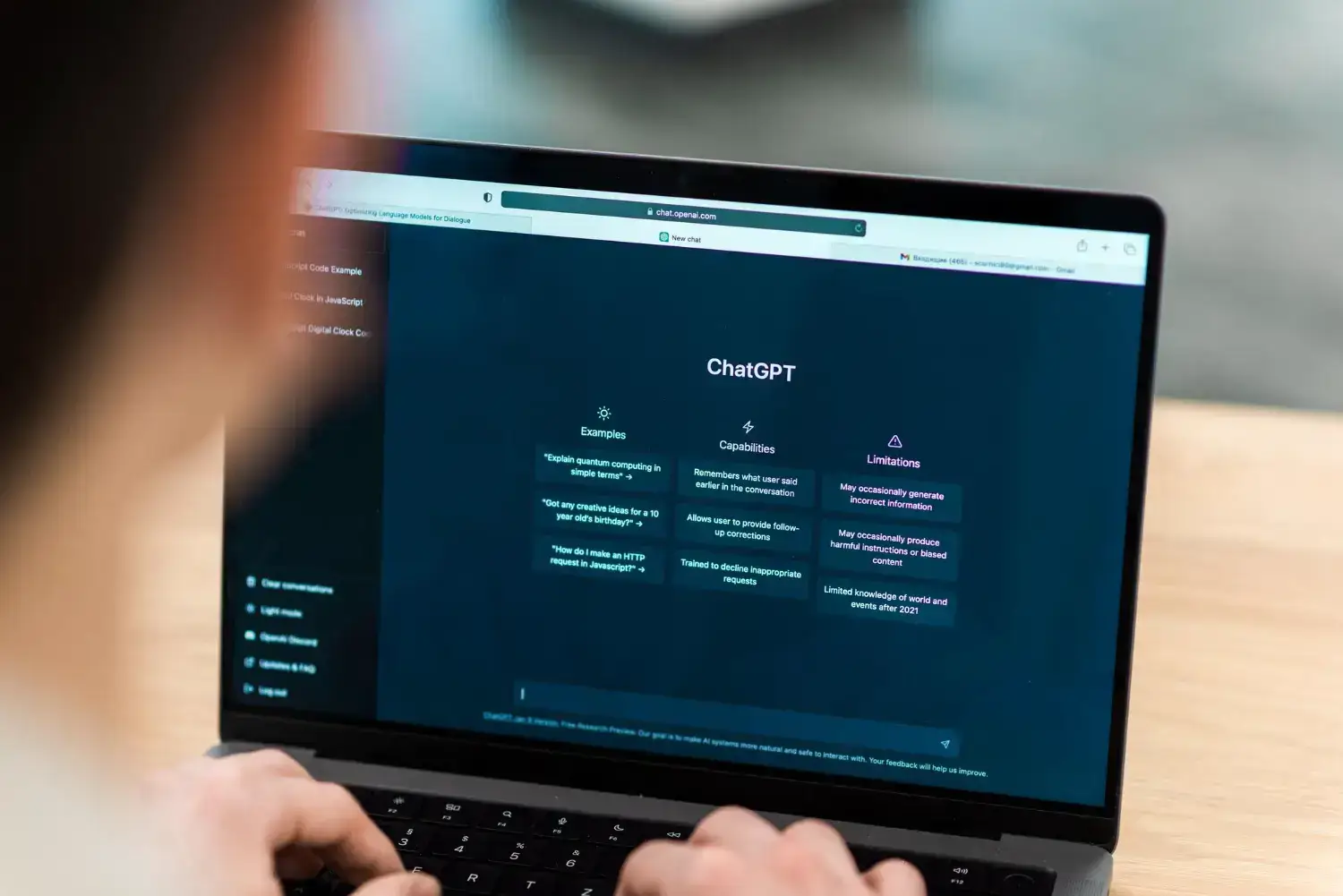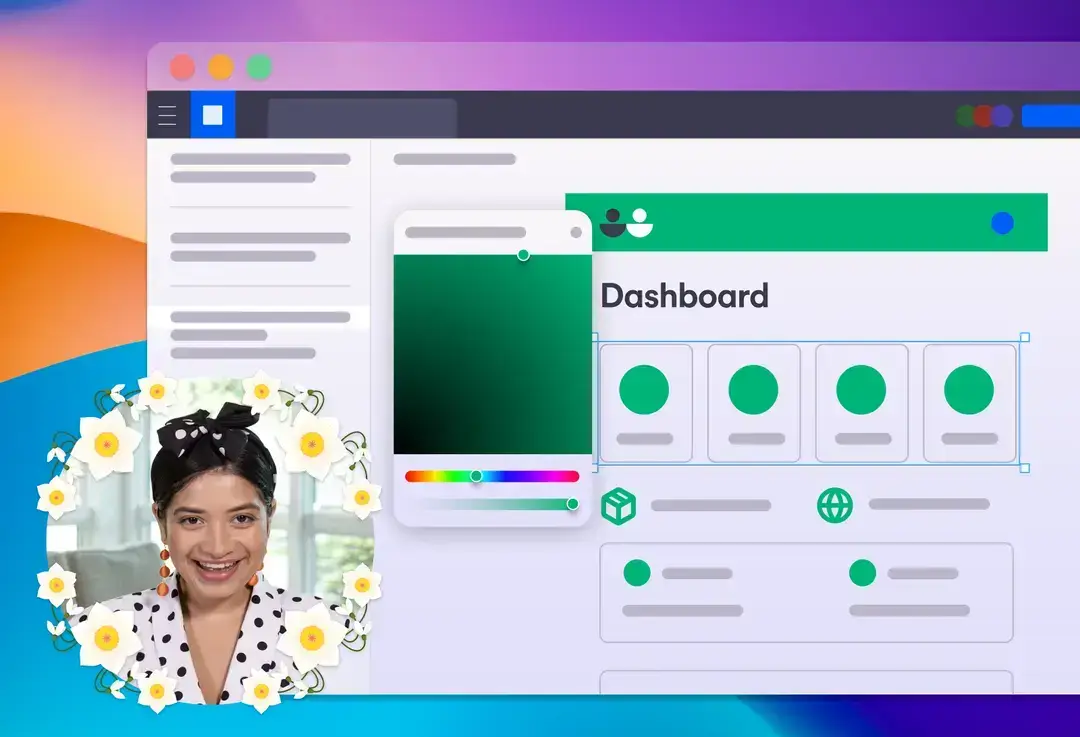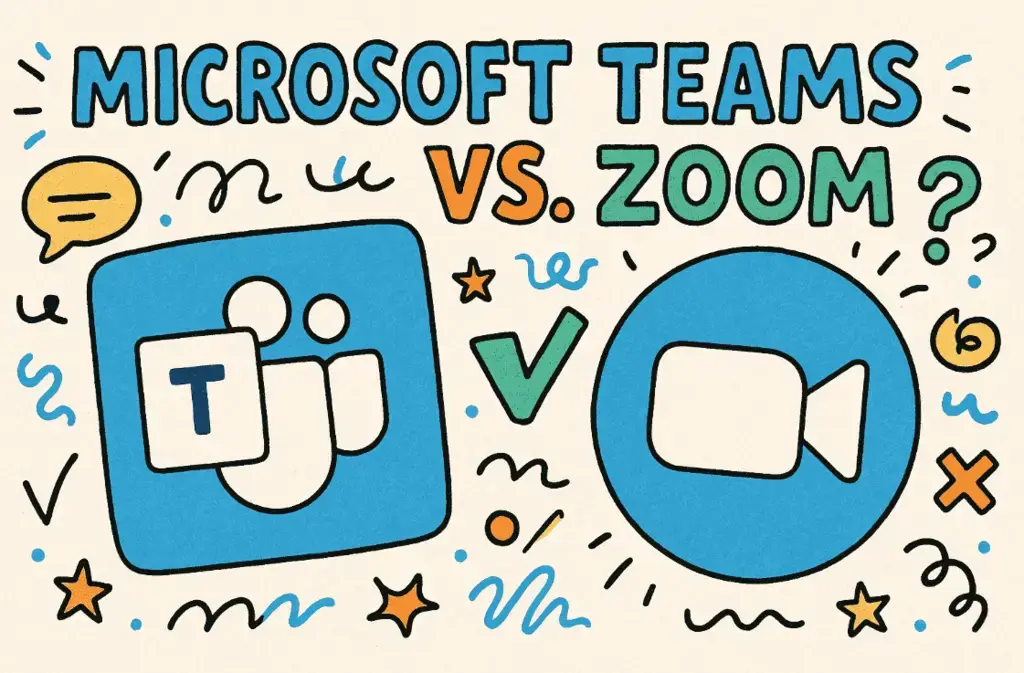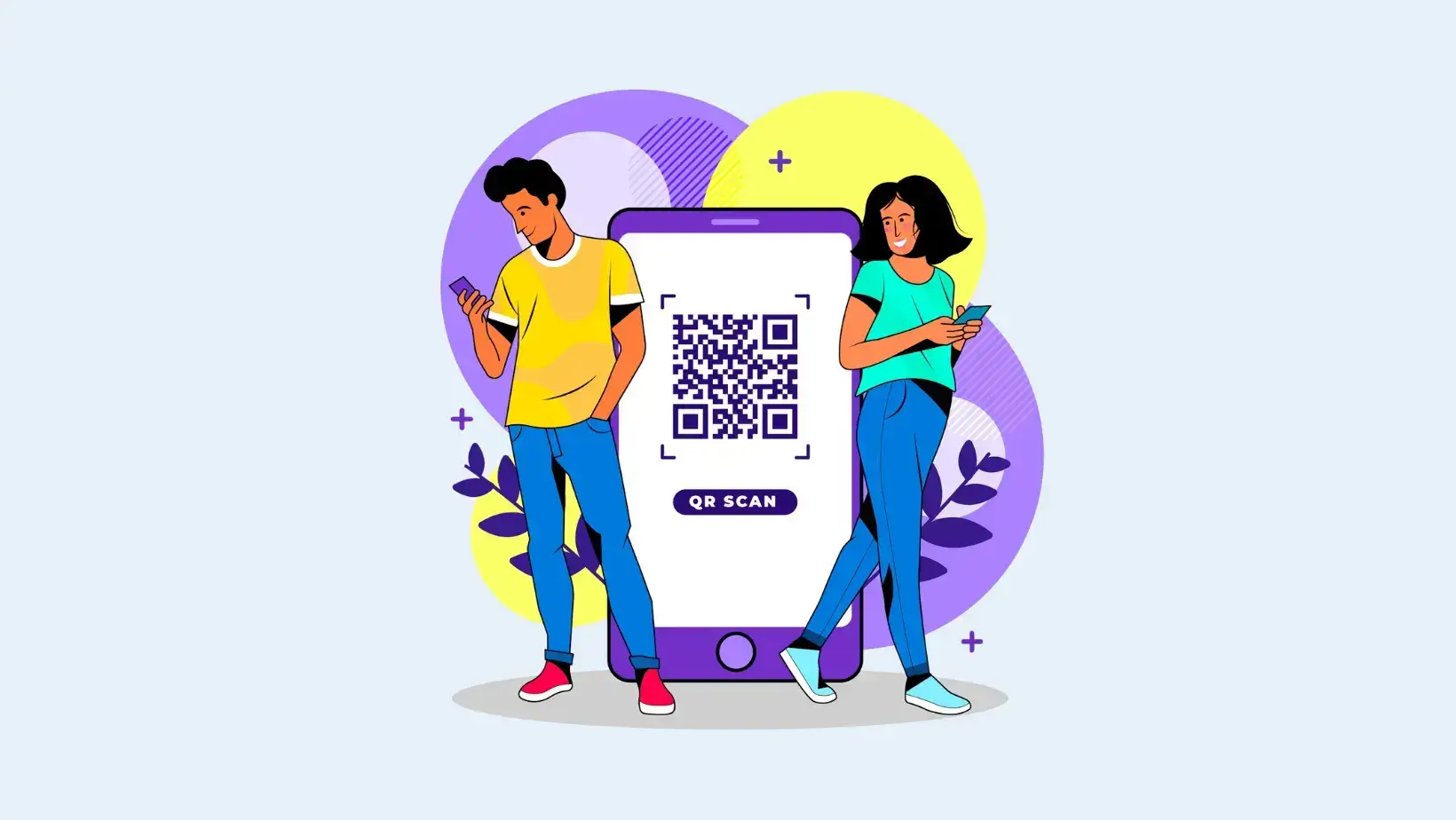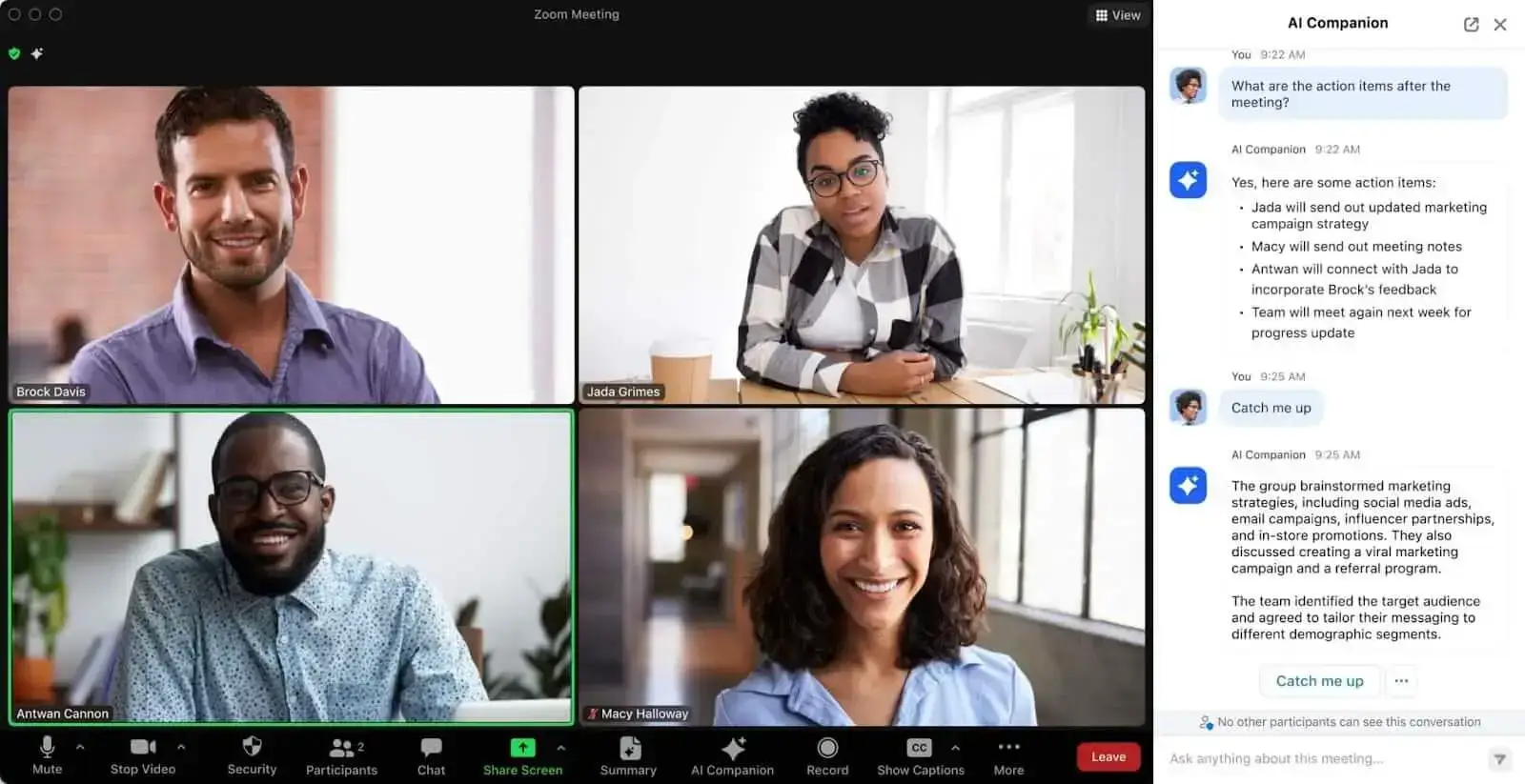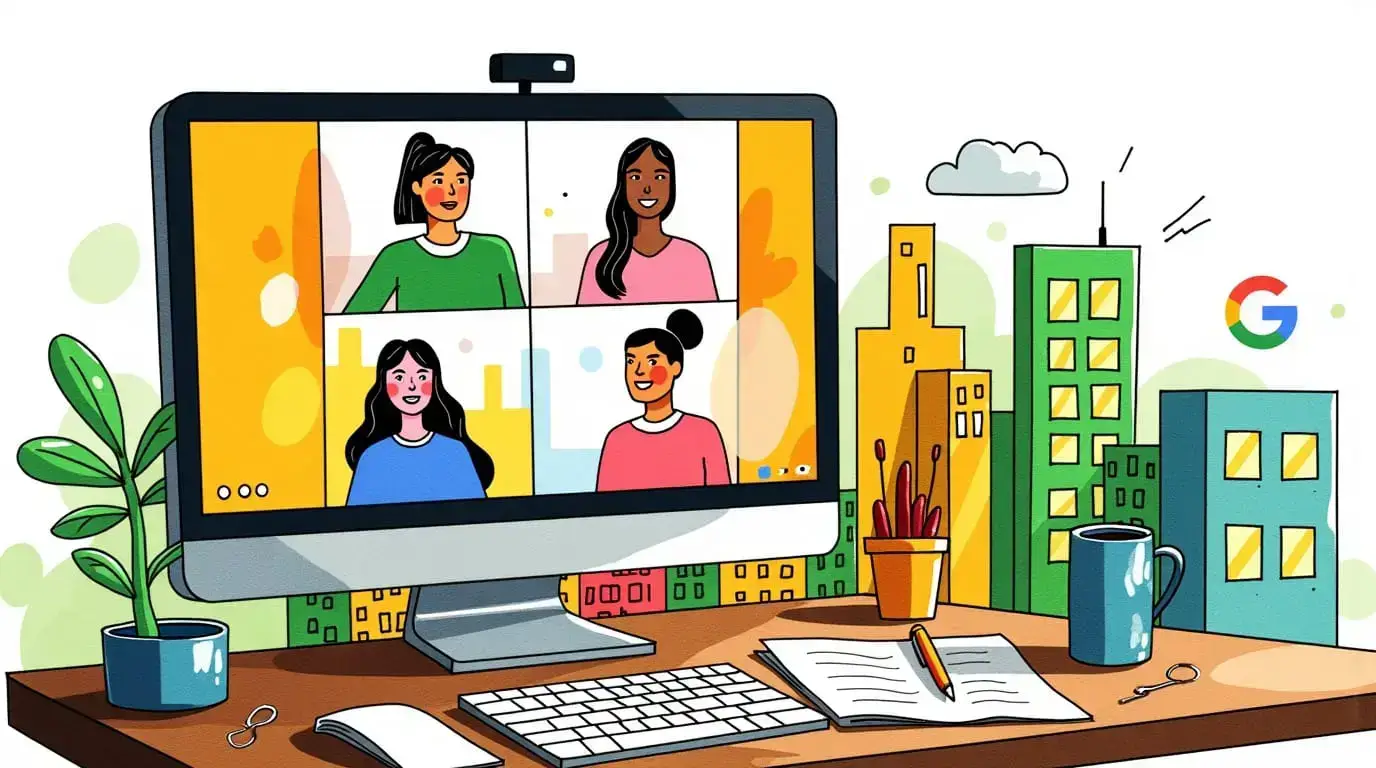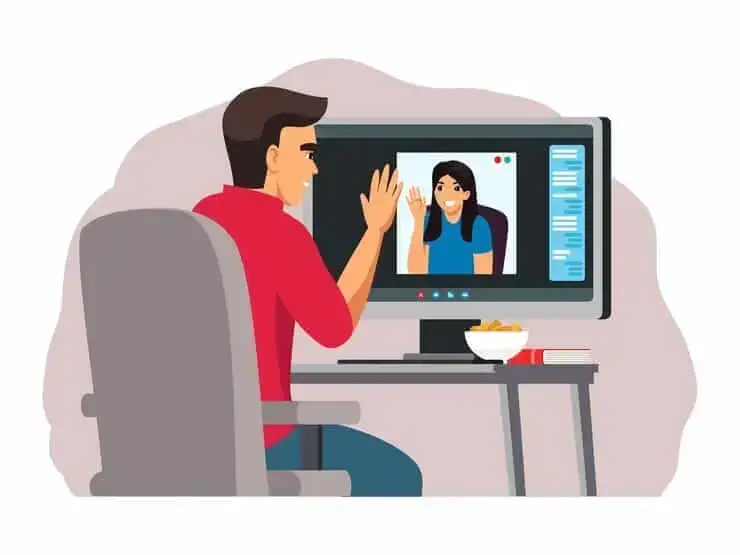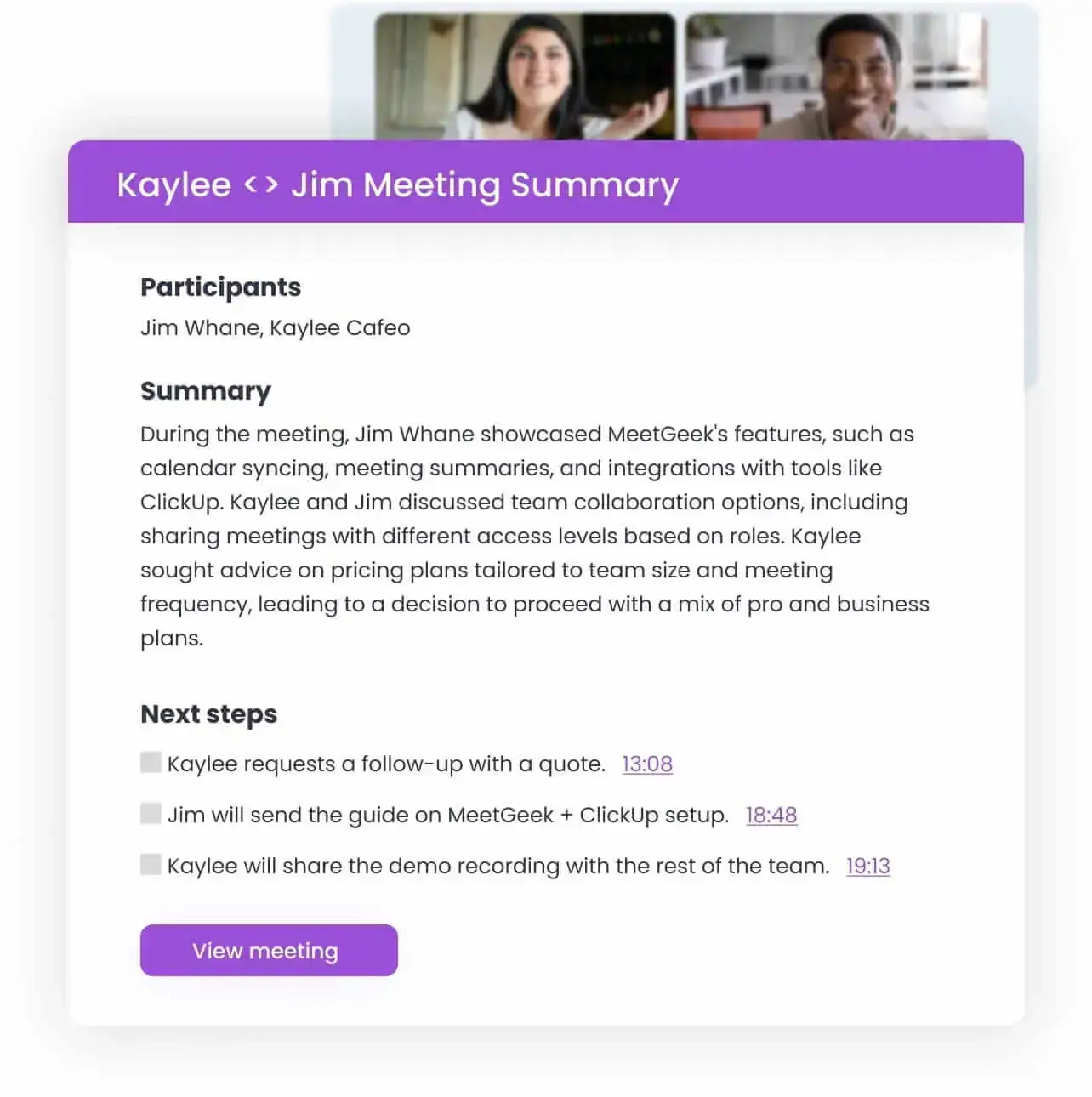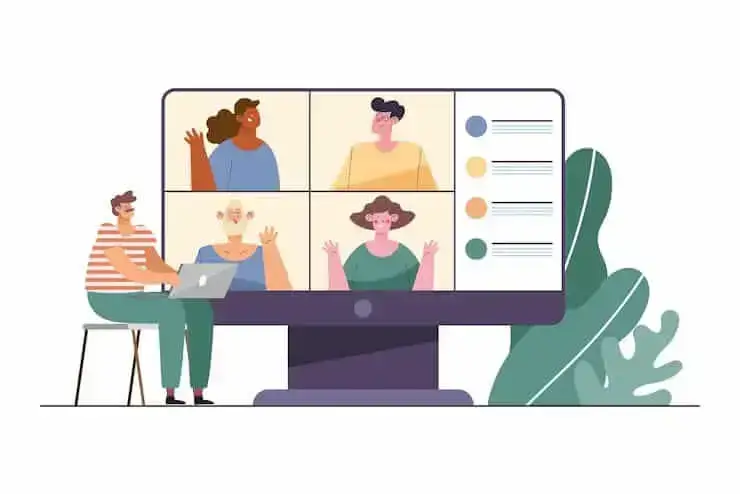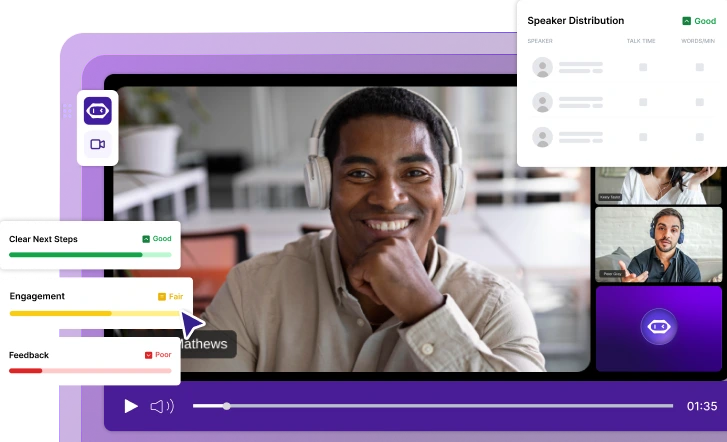Virtual Meeting Etiquette: Essential Rules for Professionalism
In this article we will explore 15 practical virtual meeting etiquette tips to help you run smoother, more professional online meetings.
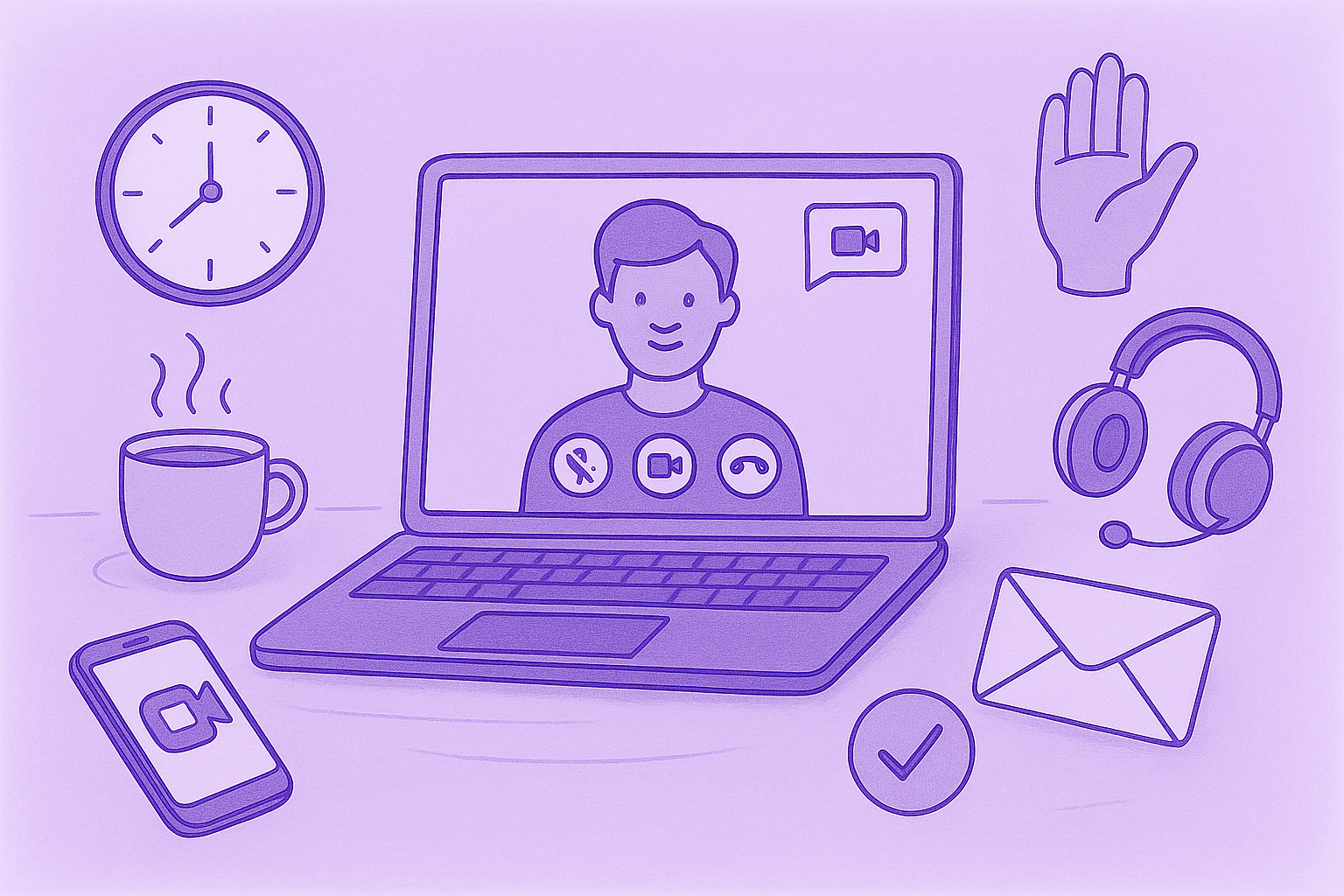
✅ Free meeting recording & transcription
💬 Automated sharing of insights to other tools.

Virtual meetings are now a regular part of work life. Whether you're at home, in the office, or somewhere in between, chances are a big part of your day involves talking to your team through a screen.
When these meetings run well, they bring people together, help ideas flow, and keep projects moving. But when they don’t, things can quickly become confusing, unfocused, and frustrating for everyone involved.
That’s where proper virtual meeting etiquette comes in. A few simple habits can make a big difference in how people connect, share, and stay engaged during online meetings.
Why virtual meeting etiquette matters
People move between online meetings and time in the office, and video conference calls often include a mix of meeting participants who are physically present and others joining from a computer at home or a different location.
Without shared expectations, small issues like background noise, late arrivals, messy screen sharing, or unclear agendas can slow decisions and weaken collaboration.
Proper virtual meeting etiquette keeps attention on key information and discussion points. It helps every person feel included and heard, no matter where they connect from. Clear norms reduce unnecessary distractions, protect sensitive information, and make it easier to capture notes and plan the next meeting.
Simple habits go a long way: set and share a meeting agenda, join on time, mute when not speaking, use a dedicated workspace, and show attentive body language on camera. These practices help participants give full attention, keep the conversation on track, and respect other attendees.
Boost every meeting with MeetGeek
Great virtual meetings depend on structure, focus, and accurate follow-up. MeetGeek supports all three by automatically recording, transcribing, and summarizing your online meetings and in-person meeting discussions.
Its AI assistant captures key information from every conversation, helping you stay focused on what’s being said instead of juggling other tasks like note-taking.
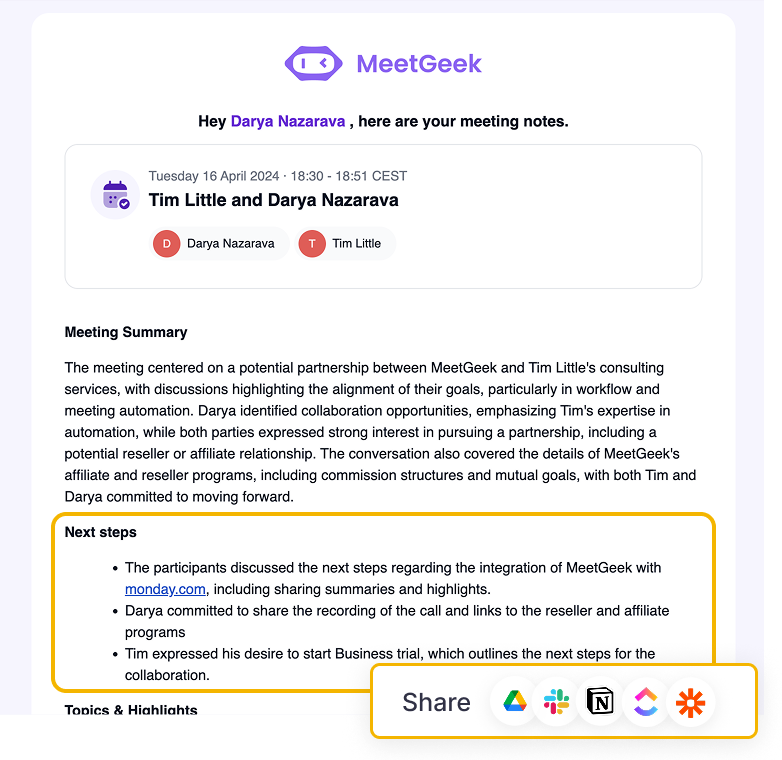
MeetGeek’s mobile app allows you to record in-person meetings in the conference room or any dedicated workspace and get the same insights as you would from a video conference.
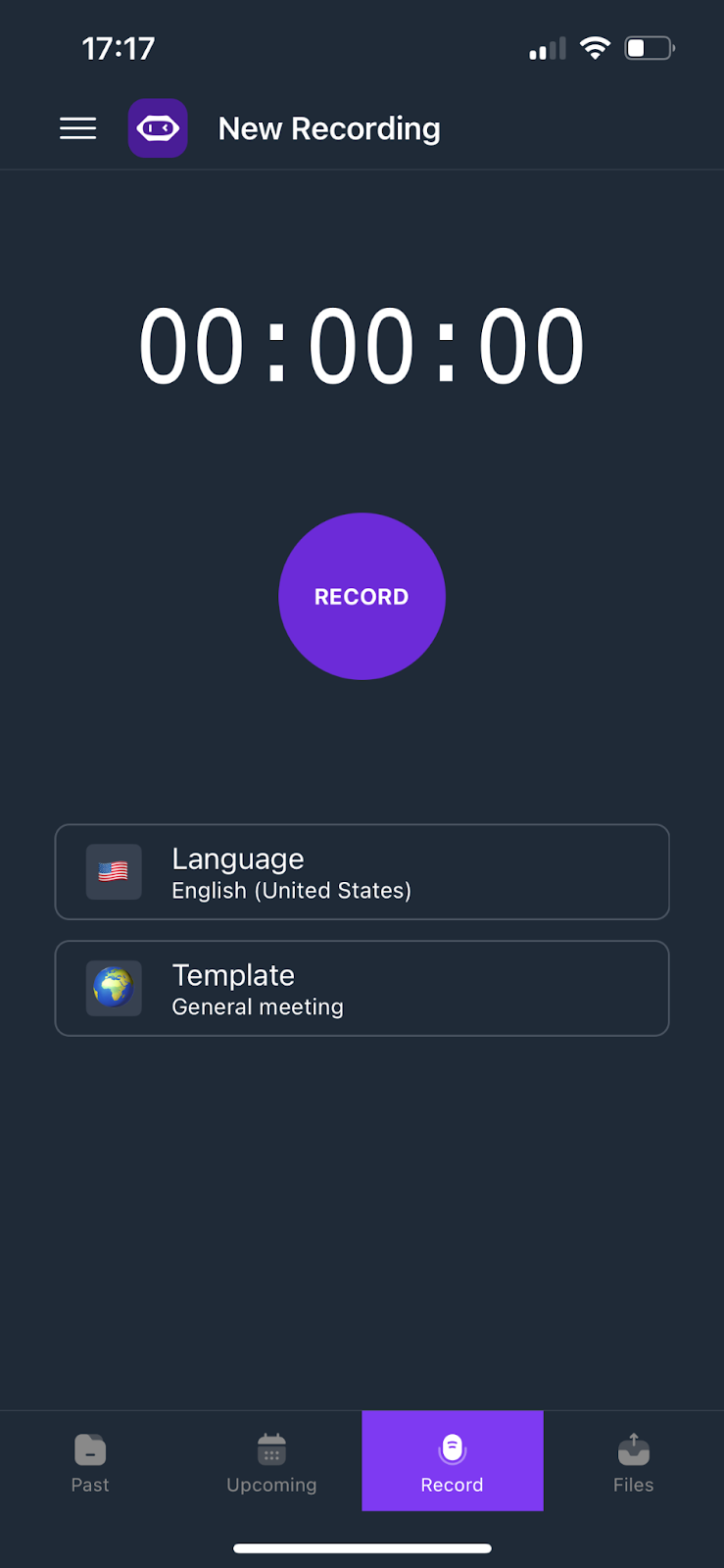
Plus, with a Chrome extension that integrates with platforms like WebEx, Discord, Zoom, and Google Meet, you can connect MeetGeek to virtually any virtual work meeting environment.
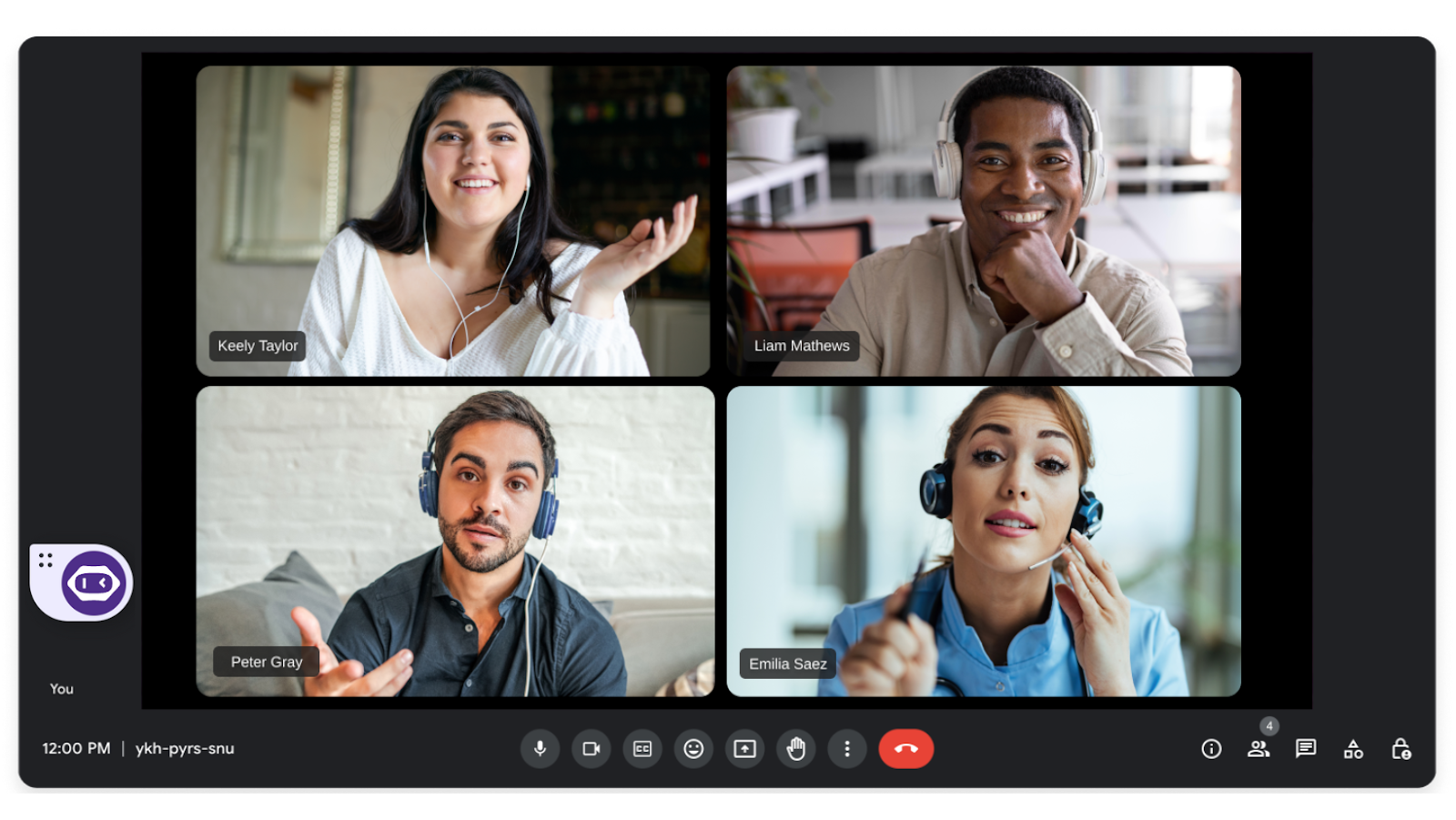
Its transcription accuracy ensures that discussion points, decisions, and action items are captured clearly for every speaker and shared across your team members.
“MeetGeek saves a lot of time by automatically recording, transcribing, and structuring meetings. It’s very convenient to quickly find the needed moments using keywords and share snippets with colleagues. Integration with other tools is seamless, and the interface is intuitive even for new users.” – Lidia N., Senior Talent Acquisition Manager
Virtual meeting etiquette before the call
We'll break down our 15 meeting tips based on when they occur. Let's start with what to do before the call starts:
1. Test your tech and internet connection
A strong connection and functional equipment are important for every virtual meeting. Before joining, check your internet connection, camera, microphone, and screen sharing settings. Make sure your computer and audio devices are working properly so that other attendees can hear and see you clearly.
2. Choose a professional background
Your background sends a message. Select a clean, neutral space without unnecessary distractions. A dedicated workspace with good lighting makes your presentation more professional. If that’s not an option, choose a clean, neutral virtual background. Stay away from messy office areas or personal spaces that could distract participants from the conversation.
Taking a Zoom meeting with an unprofessional backdrop, but don’t want to resort to a virtual background? Learn how to blur your background by reading this article.
3. Dress for the occasion
Just as you would for an in-person meeting, dress appropriately for your virtual meeting. Wearing professional attire shows respect for the other participants and helps maintain the same level of seriousness as if you were physically present in a conference room. Even if only your upper half is visible, dressing fully can help you stay focused and project confidence on camera.
4. Review the agenda and key materials
Every productive meeting starts with a clear meeting agenda. Review discussion points and relevant documents ahead of time so you can stay engaged and contribute meaningfully. This preparation helps the conversation flow smoothly and reduces the risk of forgetting an important thing you wanted to discuss.
Pro Tip: MeetGeek can automatically share summaries and notes from the previous meeting, helping attendees join the conversation well-prepared and focused on the right agenda points.
5. Join early
Arriving late to a virtual meeting can disrupt the flow and distract other participants. Join a few minutes before the scheduled time to address any last-minute technical hiccups. This small habit shows professionalism and sets the tone for a productive session.
Virtual meeting etiquette during the call
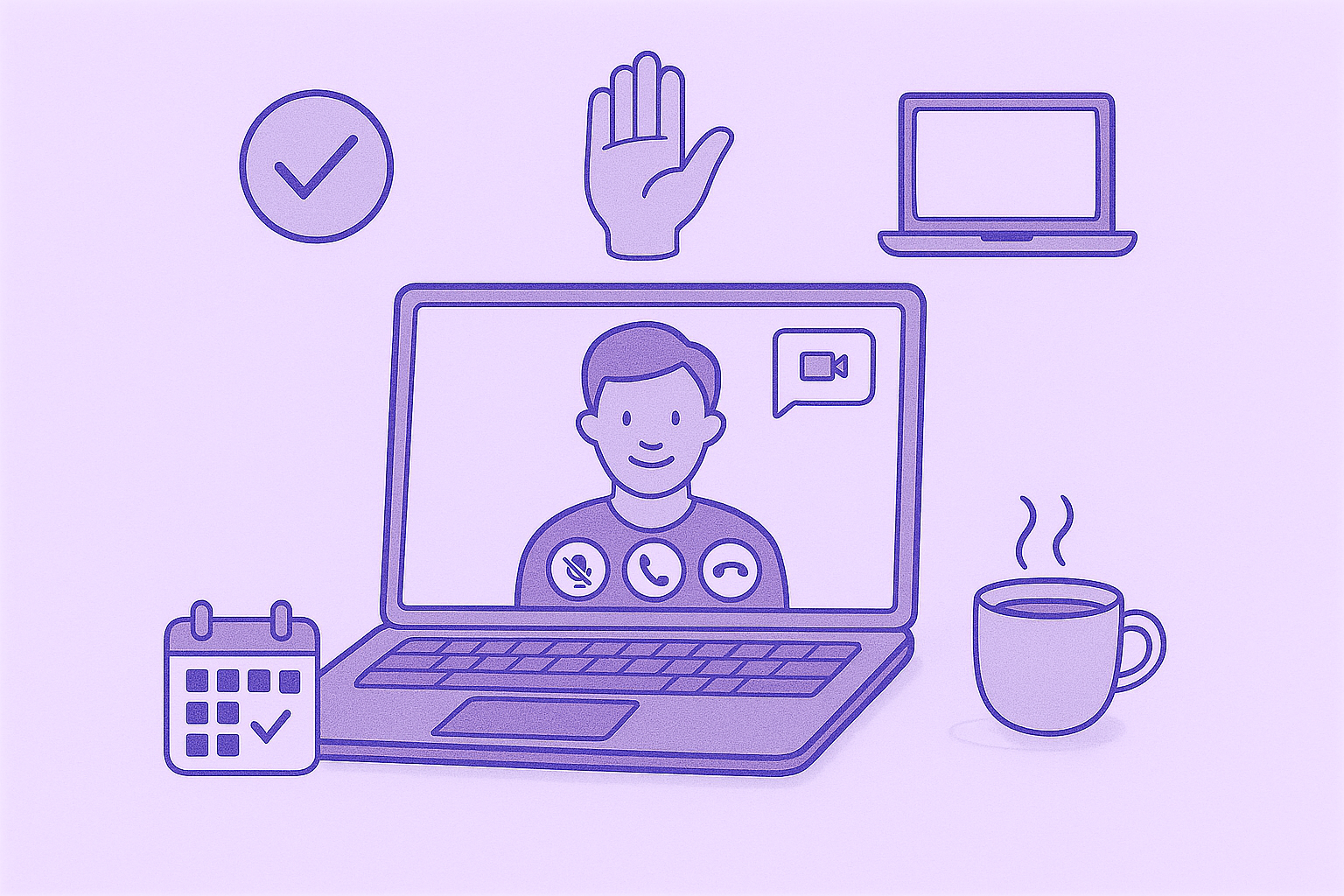
Once the meeting has started, it's time to put these best practices to good use:
6. Mute when not speaking
Uncontrolled background noise is one of the biggest causes of disruption during online meetings. Whether it’s office chatter, typing on the keyboard, or unexpected sounds at home, muting your microphone when you’re not talking keeps the focus on the current speaker. Unmute only when you need to speak or respond.
7. Give your full attention
Multitasking during a virtual work meeting, like checking your email or working on other tasks, can make you lose track of the discussion and signal disinterest to other attendees. Keep your full attention on the conversation and use attentive body language to show that you’re engaged. Looking at the screen and nodding when appropriate helps speakers feel heard.
Pro Tip: MeetGeek captures and organizes key information for you, so you don’t have to split your focus between note-taking and participating in the discussion.
8. Speak clearly and look at the camera
When it’s your turn to talk, speak at a moderate pace and look directly at the camera. This mimics eye contact in an in-person setting and helps keep participants connected. Speaking clearly ensures that even those with weaker internet connections or audio setups can follow along.
9. Follow the agenda and respect time
Sticking to the planned agenda helps prevent the conversation from drifting into unrelated topics. Keep your points concise and relevant. Respecting the meeting timeline is key to maintaining a professional flow, especially when there are multiple discussion points or speakers.
10. Involve everyone
Virtual meetings can sometimes sideline quieter participants. Make an effort to involve other attendees by asking for their input or directly inviting them to share their ideas. This is especially important when some team members are physically present in a conference room and others have joined remotely. A balanced discussion strengthens collaboration and ensures no one is left out.
11. Be respectful and avoid interruptions
Avoid interrupting others, even if you have a great idea you’re excited to share. Use built-in meeting features like “raise hand” to signal when you’d like to speak. Letting each person finish their point helps maintain clarity and keeps the discussion organized.
12. Assign roles when necessary
For larger online meetings, assigning roles such as host, note-taker, and timekeeper can make the session more productive. Clear roles help keep the meeting on track and ensure that no important points are overlooked.
Virtual meeting etiquette after the call
Your job isn't done the moment the call is over. If you're interested in making the most out of any virtual meeting, here are three more tips for after you've left:
13. Summarize key takeaways
A strong meeting doesn’t end when the video conference is over. Summarizing the main points helps make sure everyone leaves with a shared understanding of the discussion and decisions made. This recap should highlight key topics, assigned tasks, deadlines, and any follow-up actions needed before the next meeting.
Pro Tip: MeetGeek automatically generates summaries and transcripts, which can be shared instantly with participants to keep everyone aligned.
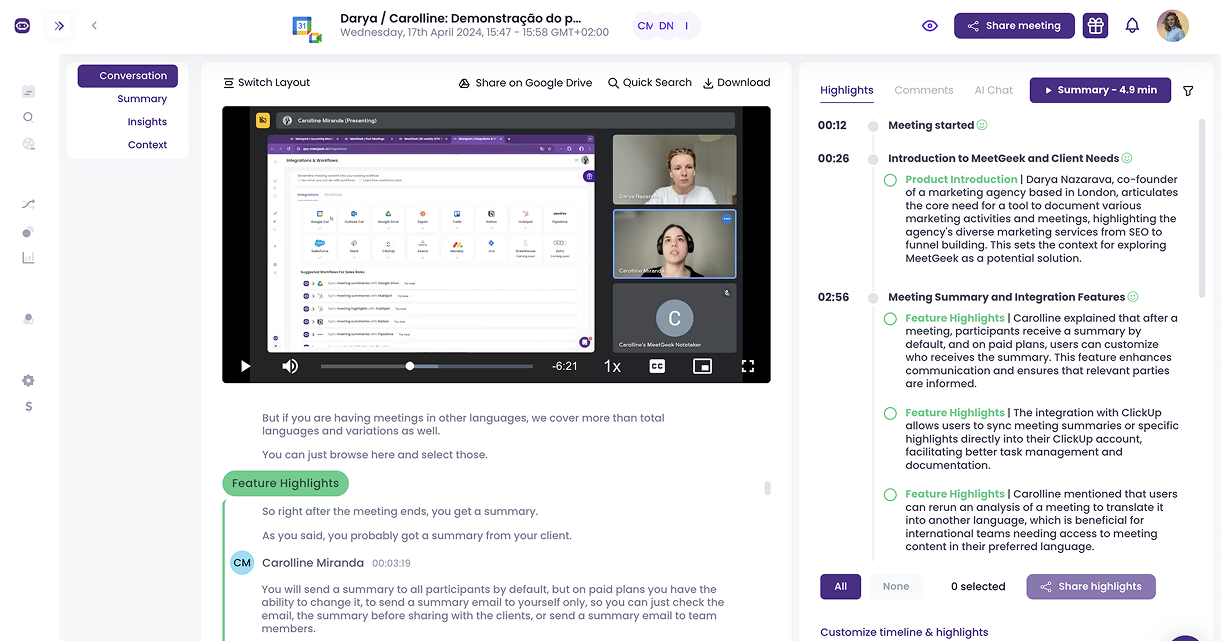
14. Share follow-ups and action items
After the meeting, send a clear message outlining tasks, responsibilities, and deadlines. This follow-up step turns conversation into action and keeps projects moving forward. It’s also a good opportunity to plan the next meeting if needed.
15. Reflect and improve
Take a few moments to reflect on what went well and what could be improved for future sessions.
Did you follow proper virtual meeting etiquette? Were there unnecessary distractions that could be avoided next time? Sharing feedback with your team helps improve collaboration over time.
Adapting etiquette for different meeting types
Virtual meeting etiquette isn’t the same for every situation. A one-on-one check-in has a different dynamic than a brainstorming session or a client presentation. Adjusting your approach based on the type of meeting helps keep conversations focused, respectful, and productive.
One-on-one meetings
In one-on-one conversations, the focus is often on trust, clarity, and honest discussion. A structured but relaxed tone works best.
- Set a clear agenda with a few discussion points so both people know what to expect.
- Close other tabs and limit distractions to give your full attention.
- Use attentive body language to show you’re listening.
- Ask open questions and give space for honest feedback.
- End with a quick recap of key points and next steps.
Team brainstorming sessions
Brainstorming works best when everyone feels encouraged to share ideas. Clear etiquette helps keep the conversation inclusive and productive.
- Start with a quick icebreaker to make participants feel comfortable.
- Use screen sharing to display prompts or examples that spark ideas.
- Remind participants to let others finish before speaking.
- Assign someone to capture ideas in a shared document so nothing is forgotten.
- Encourage quieter team members to share their thoughts.
Client or stakeholder calls
External meetings call for extra professionalism. Every action reflects on your organization, so preparation and clear communication are key.
- Begin by introducing all attendees clearly, whether they’re in person or joining virtually.
- Stick closely to the meeting agenda to respect everyone’s time.
- Check your screen sharing setup to avoid showing unrelated or sensitive information.
- Take careful notes on decisions, timelines, and responsibilities.
- End with a clear summary of next steps and confirm the next meeting if needed.
Pro Tip: MeetGeek’s conversation repository helps you revisit past client calls without digging through scattered notes. Learn more about this by watching this video:
Building better virtual meeting habits
Consistently applying these etiquette rules helps create a more productive and respectful virtual environment. Just like in person interactions, structure and attentiveness build stronger connections between team members and encourage meaningful collaboration.
MeetGeek is designed to support these habits by automating meeting transcription, storing conversations in a central repository, and integrating with over 8,000 tools to keep your workflow connected. Whether your attendees are virtual or physically present, MeetGeek ensures every discussion point is recorded, summarized, and shared accurately.
Try MeetGeek for free and make every meeting more productive.
Frequently asked questions
What is virtual meeting etiquette?
Virtual meeting etiquette refers to the rules and behaviors that help keep online meetings professional, respectful, and productive. It includes everything from arriving on time and testing your connection to muting when not speaking and sharing follow-ups afterward.
Why is it important to follow meeting etiquette online?
Proper etiquette helps limit distractions, maintain focus, and ensure that all participants feel heard. It’s the foundation for productive collaboration and smooth communication, especially when not everyone is physically present.
How can I stay focused during long virtual meetings?
To stay engaged, prepare by reviewing the meeting agenda, minimizing other tasks, sitting in a dedicated workspace, and keeping your camera on to encourage attentive body language. Tools like MeetGeek can also capture key information so you can focus fully on the discussion.
What should I do if I have technical issues during a virtual meeting?
If you experience poor internet connection or audio problems, use the chat feature to inform the host. Joining early and testing your setup can help prevent most issues before they occur.
.avif)



